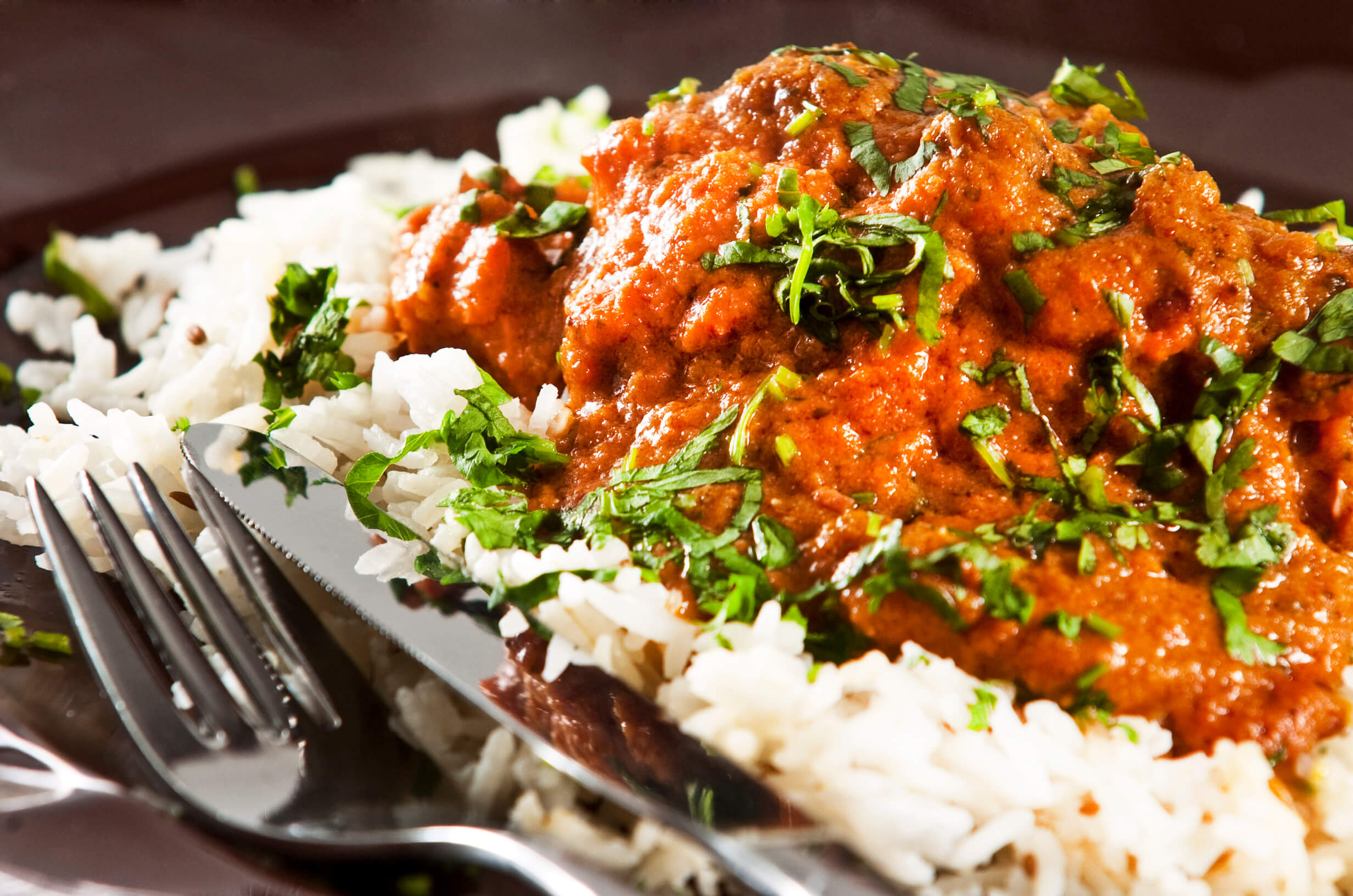From Italian pizza to Japanese sushi, we all have our favorite international cuisines that provide comforting flavors from cultures across the globe. But what are the most iconic national dishes eaten in their native countries? These specialties represent the distinct ingredients, cooking styles, and food cultures unique to each place.
Trying a nation’s signature dish offers a tasty glimpse into its history and character. India’s spicy chicken tikka masala reflects the blending of Mughal Empire influences with British colonialism. Mexico’s tacos showcase the vibrant street food culture of its people. From France’s decadent crème brûlée to America’s juicy burgers and fries, these national favorites reveal local flair.
This comprehensive guide covers 55 of the world’s most prized local dishes enjoyed in their native lands. Taken together, they exemplify the diversity of cuisines, flavors, ingredients and food traditions that developed across continents based on geography, climate, history and culture. From African stews to South American ceviche to European comfort foods, each iconic plate tells a story.
We journey across Europe to discover Swiss fondue, Spanish paella, British fish and chips, Italian pizza and more Old World specialties. The Americas tempt with Mexican tacos al pastor, Brazilian feijoada black bean stew, Jamaican jerk chicken, and Canadian poutine. In Asia, we explore ramen shops in Japan, India’s fiery curries, Vietnamese pho noodle soup, Indonesian satay, and other tasty national staples.
The Middle East’s signature spice blends flavor dishes like hummus in Israel and Palestine, doner kebab in Turkey, and tagines in Morocco. Throughout Africa, we uncover injera flatbread in Ethiopia, South African bobotie, Nigerian jollof rice, Kenyan ugali, and more heartwarming staples. Even Australia and Antarctica have their own special foods, from Aussie pavlova to seal stew once eaten by early Arctic explorers.
With so many cultures and cuisines represented, what constitutes a nation’s “most popular” national dish can be subjective. Factors like local pride, staple comfort foods, global fame, and dishes unique to a place influence popularity. For this guide, dishes were selected based on frequently recommended items that locals would recognize as representing their national food identity and culture.
While some famous dishes like pizza have many variations, iconic versions from their original homeland are featured. Other nations have multiple specialties considered “co-national dishes” based on region, so both are included. A diversity of flavors is highlighted to showcase the breadth of each cuisine. Signature street food favorites hold equal footing with restaurant plates.
From the spice route to the Silk Road, food has long been a gateway to understanding people and cultures worldwide. Through these 55 dishes, we honor the ingredients, cooking methods, and food traditions unique to each place that render their cuisine distinctive. Meals famously bring people together – and this shared love of remarkable food crosses all borders.
While coastal regions unsurprisingly rely more on seafood, and colder climes on heartier fare, every land develops its own food identity. Preparing and enjoying these national favorites at their point of origin offers unmatched authenticity. But we can still approximate beloved flavors at home and in restaurants abroad. Making or tasting iconic dishes from another culture bridges us to lives and traditions different from our own.
So unravel the stories behind each remarkable bite as we traverse the globe. Let aromatic spices transport you to bustling souks, easy pasta make you feel right at home in an Italian nonna’s kitchen, and the tropical flavors of coconut curry open an exotic escape. We proudly celebrate the foods bringing joy, comfort and identity to peoples across hundreds of cultures for generations.
Here is a list of 55 popular national dishes from around the world:
Italy – Pizza
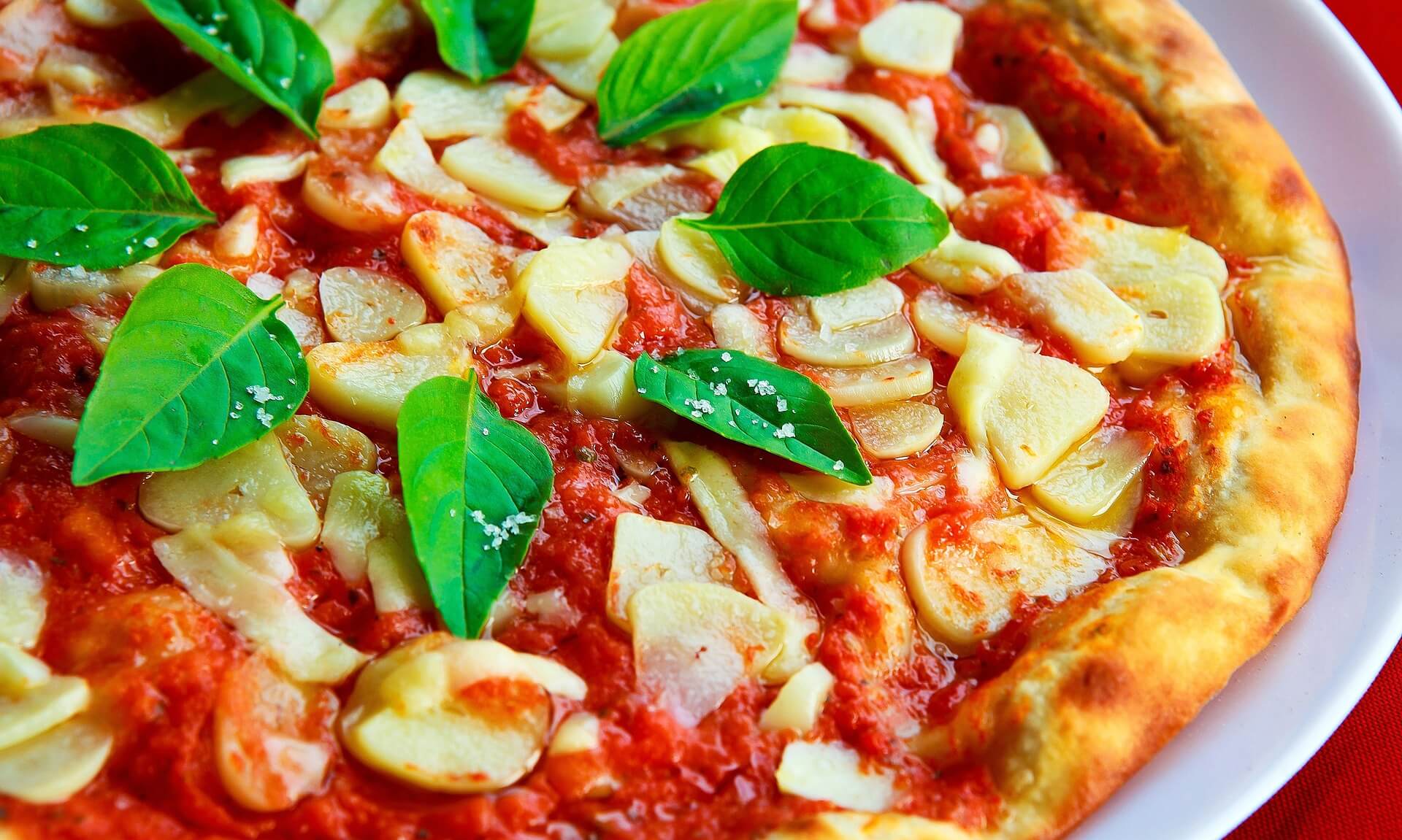
Of all the iconic Italian culinary exports that have conquered the globe, pizza reigns supreme. This ubiquitous flatbread dish topped with tomatoes, cheese, and various other toppings represents Italian cuisine and culture like no other. Beyond just a popular food, pizza has become a point of national pride and identity for Italians.
Unlike many national dishes with geographical origins tracing back centuries, pizza is a more recent Italian invention. Flatbreads with olive oil and toppings were first created in the southern port city of Naples around the late 1700s. Simple pizzas were sold as affordable street food eaten by working-class Neapolitans.
After Italian unification in the late 1800s, King Umberto I and Queen Margherita visited Naples in 1889. Legend has it that the royal couple wanted to try this local specialty. To represent the Italian flag, red tomatoes, white mozzarella cheese, and green basil were used as pizza toppings. The Queen loved the pizza so much that it was named “Pizza Margherita” in her honor.
This early documented royal pizza helped cement pizza’s path to becoming a quintessential Italian food. As Italians emigrated, they brought pizza recipes and traditions with them, especially to the United States. Affordable and customizable, pizza adapted easily to new cultures while retaining its Italian roots.
After World War II, Allied troops who served in Italy returned home craving pizza, fueling demand and familiarity worldwide. Continuous waves of Italian immigration spread pizza’s popularity across continents, making it one of the first internationally beloved foods.
While pizza has spawned countless regional variations, Neapolitan-style remains the most traditional. These pizzas use San Marzano tomatoes, fresh mozzarella cheese, basil leaves, and olive oil on a thin crust baked in wood-fired ovens. Other ubiquitous toppings are mushrooms, pepperoni, vegetables, prosciutto, salami, and anchovies.
Beyond flavor, pizza holds significance as a social and cultural event for Italians. Eating pizza is central to family gatherings, holidays, and nights out with friends. Pizzerias serve as community hubs full of social activity and energy. Pizza is eaten casually and communally, folded into a quick snack.
The artistry and skill of pizza makers, known as “pizzaiuoli,” has even been recognized by UNESCO as an endangered cultural heritage site needing preservation. Generations of pizzaiuoli have perfected stretching dough, properly baking crusts, and quickly chopping toppings. They turn pizza-making into an entertaining show.
Pizza’s beloved status and history has endowed it with nationalist pride in Italy today. In 2017, outrage ensued over comments by Chicago’s mayor claiming pizza wasn’t originally from Italy. Italians vehemently defended pizza’s heritage, showing how Italians feel they own pizza as a cultural creation regardless of its global ubiquity.
Italian immigrants spread pizza everywhere, but the thin Neapolitan style remains iconically Italian. Whether grabbing a quick slice or lingering for hours over pizza in a bustling pizzeria, pizza in Italy offers more than just sustenance – it provides connection to community and tradition. The iconic flatbread unites Italy around a sense of culinary identity.
Mexico – Tacos
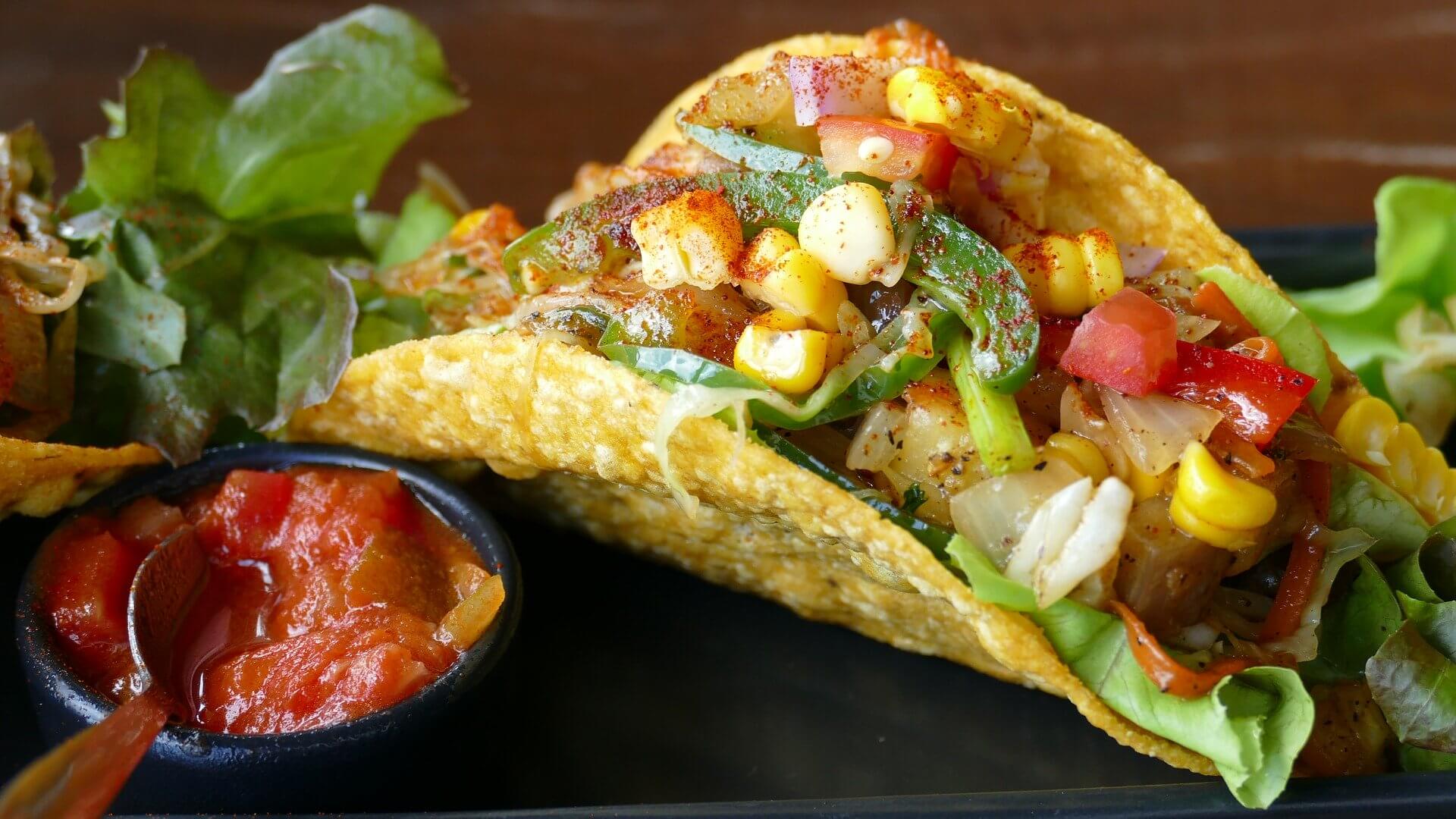
Of all the tasty treats that make up the cuisine of Mexico, the taco perhaps best encapsulates the heart and soul of Mexican food culture. This simple yet varied dish has humble origins but has become an iconic national dish, a go-to street food, and even a global ambassador for Mexican flavors.
Tacos consist of a soft corn or wheat tortilla filled with a variety of meats, cheeses, vegetables, salsas, and other toppings. Typical tacos include carnitas (braised pork), carne asada (grilled beef), pollo (chicken), lengua (tongue), chorizo (sausage), along with cilantro, onions, queso fresco (fresh cheese), and various hot sauces.
This satisfying, protein-packed finger food traces its history to the pre-Hispanic indigenous peoples of Mexico who ate tortillas filled with small fish. Spanish colonizers brought beef, pork, and chickens that were adopted as taco fillings. What became the modern taco evolved as a quick, inexpensive street food in the 19th century urban working-class neighborhoods of Mexico City and Guadalajara, eventually spreading across the country.
Tacos became an on-the-go meal not just for workers but for all levels of society. From businessmen to farmers, everyone would head to their favorite taqueria each day to grab freshly made tacos and other antojitos (street snacks). Tacos could be eaten quickly at stands or street carts, which added to their appeal as fast fuel for the day.
The taco’s simplicity led to regional variations as immigrants adapted local ingredients. Mexico City-style tacos include costra (crispy fried pork) and suadero (beef cut from between the belly and leg). Baja California is known for tacos packed with freshly caught seafood. The diversity of fillings and customizable toppings make tacos iconic street food.
Tacos have become so quintessentially Mexican that their popularity has spread them well beyond street stalls to become standard restaurant fare worldwide. In the United States, tacos are often identified as one of the most popular Mexican imports. From fast food chains to taco trucks, they are ubiquitous. But traditional handmade tacos from taquerias and street vendors in Mexico retain an authenticity and appeal.
Today, eating tacos still represents the hustle and bustle of daily Mexican life. Long lunches centered around tacos fuel social bonding between family, friends, and coworkers. The flashy trompos (vertical rotisseries) used to make tacos al pastor highlight the theater and skill of taqueros masterfully carving rotating meats onto fresh tortillas. Whether at quick roadside stands or sit-down restaurants, tacos embody rich Mexican culture and cuisine.
From leftover barbacoa on Sunday mornings to post-party tacos de canasta, tacos have become ingrained into everyday customs. They can be casual or celebratory, no-frills or elaborately topped. Tacos have the delicious versatility to play many roles. But in whatever form, tacos remain a quintessential taste of Mexico.
India – Chicken Tikka Masala
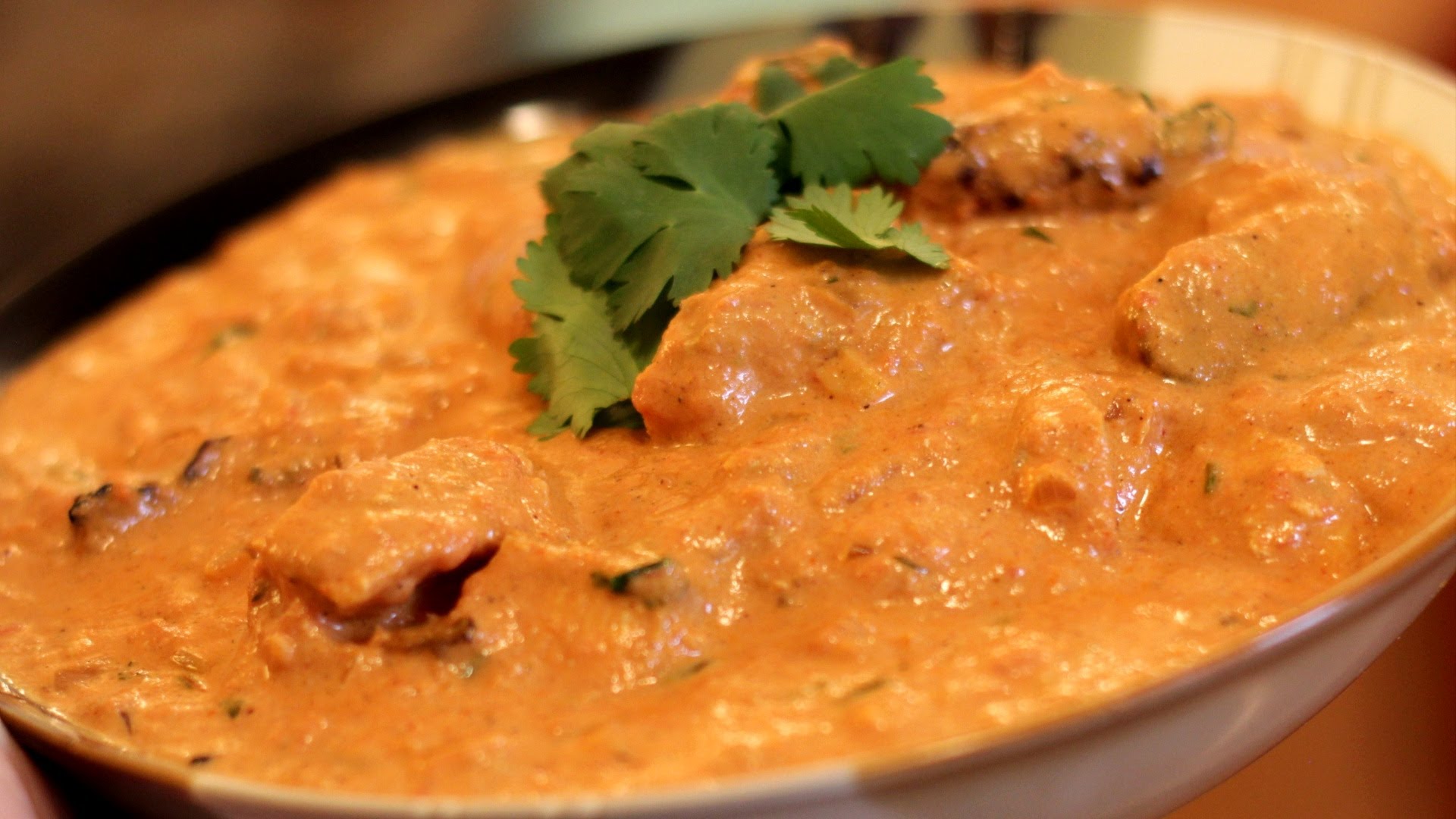
Although it may seem surprising that chicken tikka masala is considered one of Britain’s national dishes, this quintessentially Indian meal has become a culinary symbol of multiculturalism in the UK. The spicy, creamy chicken dish embodies the nation’s close ties to its former empire and large South Asian diaspora.
Chicken tikka masala likely originated when Indian immigrants adapted traditional tandoori chicken recipes to appeal to British palates. Marinating chicken in a spiced yogurt sauce before roasting in a tandoor oven comes straight from northern India. However, cooking the roasted chicken in a creamy, mildly spiced tomato gravy appears to have emerged in Britain.
Some trace origins to Glasgow in the 1970s, when an Indian chef improvised the gravy to satisfy a customer wanting more sauce. Others cite origins in London’s Bangladeshi community adding tomato soup or Punjabi recipes using paneer. In any case, it seems chicken tikka masala creatively merged South Asian cooking methods with British tastes.
The hybrid dish grew popular as “Indian” restaurants proliferated across the UK. Britons welcomed this less spicy alternative to vindaloo or jalfrezi yet still flavorful take on Indian cuisine. It allowed customization for meat eaters or vegetarians, please both mild and adventurous eaters.
Chicken tikka masala gained such widespread popularity that by 2001, Foreign Secretary Robin Cook declared it Britain’s true national dish. Some took issue with this symbolizing the country’s appropriation of other cultures. Yet most embraced chicken tikka masala as representing Britain’s multiculturalism and its long intertwined history with South Asia.
Today, “going for an Indian” at the local curry house for chicken tikka masala remains a cherished British weekend tradition. It appears on most Indian restaurant menus – even when not an authentic Indian dish. Top chefs have elevated versions with added cream, fenugreek, and exotic spices while retaining its recognizable flavor.
From family gatherings to restaurant meals, chicken tikka masala’s broad appeal reflects the diverse, inclusive nature of modern British society. Its origins may be disputed, but chicken tikka masala has undeniably become one of the nation’s most prized culinary icons. The dish embodies Britain’s rich multicultural heritage and its ability to lovingly adopt and adapt ethnic cuisine.
UK – Fish and chips

Traditional plate of fish and chips
Fish and chips, the quintessential British comfort food, holds a special place in the hearts and palates of people across the United Kingdom. This iconic dish, consisting of deep-fried fish fillets and crispy potato chips (French fries), has evolved over the years to become a cherished national treasure, symbolizing tradition, nostalgia, and culinary excellence.
Fish and chips have a rich and storied history, dating back to the 19th century. The exact origins of this dish are a matter of debate, but it’s widely believed to have been popularized by street vendors in London during the 1800s. Its affordability and accessibility made it an instant hit among the working-class population. Soon, it spread throughout the country, becoming a staple of British cuisine.
One of the key elements of fish and chips’ enduring appeal is its simplicity. The fish is typically cod or haddock, although other white fish like plaice and pollock are sometimes used, and it’s coated in a light, crispy batter made from flour, water or beer, and seasonings. The chips are cut from fresh potatoes and double-fried to achieve that perfect balance of a crispy exterior and fluffy interior. Traditionally, this dish is served with a side of mushy peas and a generous drizzle of malt vinegar or tartar sauce.
Fish and chips have transcended their humble beginnings to become an integral part of British culture. They are more than just a meal; they represent a shared experience, a connection to the past, and a symbol of British identity. For many, enjoying fish and chips evokes fond memories of family outings to seaside towns or cozy Friday night dinners at the local chippy (a British term for a fish and chip shop).
In 2003, the British Parliament even declared that the “perfect meal” should consist of fish and chips, further solidifying its status as a national dish. This declaration was a testament to the dish’s enduring popularity and cultural significance.
Moreover, fish and chips have not remained confined to the British Isles. They’ve traveled far and wide, finding their way onto menus in countries around the world, often with regional adaptations. This global appeal speaks to the dish’s universal comfort and appeal.
Thailand – Pad Thai
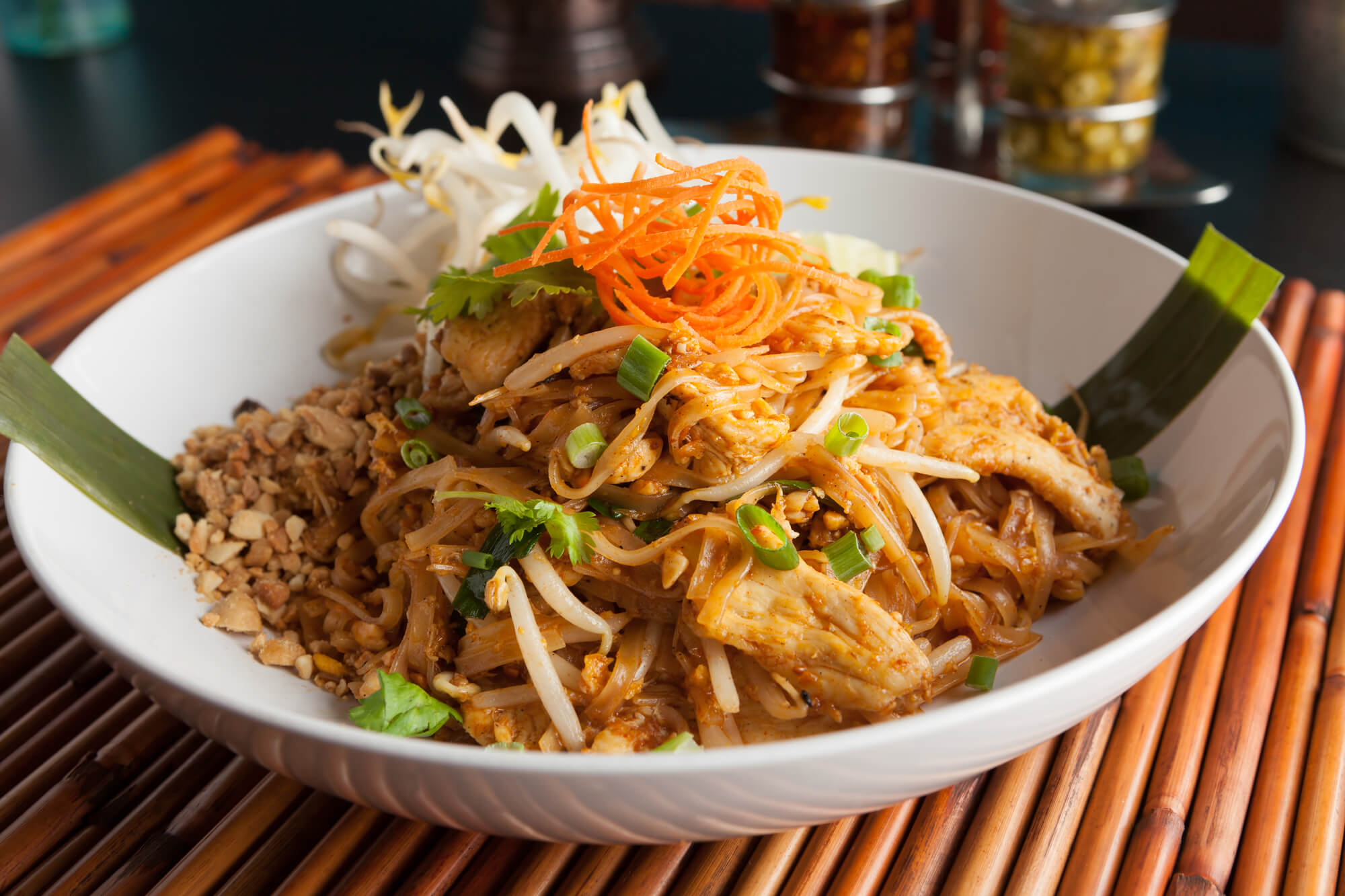
Chicken pad Thai dish of stir fried rice noodles with a contemporary presentation.
Of all the delicious dishes that make up the cuisine of Thailand, pad thai has emerged as arguably the country’s national dish. The stir-fried rice noodles drowned in sauce perfectly exemplify Thai culinary identity with a harmonious blend of sweet, salty, spicy and sour flavors. Originating in street food stalls, pad thai turned a convenient noodle dish into a craveworthy icon.
Pad thai likely emerged in the early 20th century along the Chao Phraya River and Charoen Krung Road in Bangkok. Chinese immigrants introduced rice noodles to Thailand as far back as the 1700s. Vendors would stir fry the noodles with fish sauce, vinegar, sugar, dried shrimp, garlic chives and other ingredients for a quick, portable and affordable meal.
The name pad thai, meaning “Thai stir fry,” became common around the 1930s-1940s. During this era, the Thai government promoted pad thai as part of a nationalistic campaign for cultural unity and to reduce Chinese influence. Easy to pronounce and appetizing to locals and foreigners alike, pad thai’s popularity skyrocketed.
After World War II, vendors started selling pad thai from boat-shaped carts whose sizzling woks became iconic. Competition drove innovation as pad thai evolved from a snack into a meal, with additions like crushed peanuts, lime wedges, bean sprouts and eggs. Customizable tastes and textures made pad thai universally craveworthy anytime of day.
Over the decades, pad thai evolved across regions but retained its hallmark sweet-sour-spicy profile. Tamarind pulp or lime, palm sugar, fish sauce, dried shrimp, rice noodles, garlic chives, eggs and peanuts are key ingredients that define pad thai’s balanced flavors. Chicken or shrimp are common proteins added.
Today pad thai has become internationally synonymous with Thai cuisine, rivaling Tom yum soup and massaman curry abroad. Yet the complex medley of flavors and textures makes pad thai difficult to replicate outside Thailand. From street carts to restaurants, locals crave the dish for its nostalgic soul-satisfying tastes that proudly say “Thainess.”
The global fame of pad thai has fed its popularity and variations at home. High-end restaurants elevate pad thai to an art with lavish ingredients and elaborate presentations. Yet the straightforward, grab-and-go pad thai found on Bangkok streets remains the pinnacle for Thais and tourists alike to experience this national icon in its element.
France – Crème brûlée
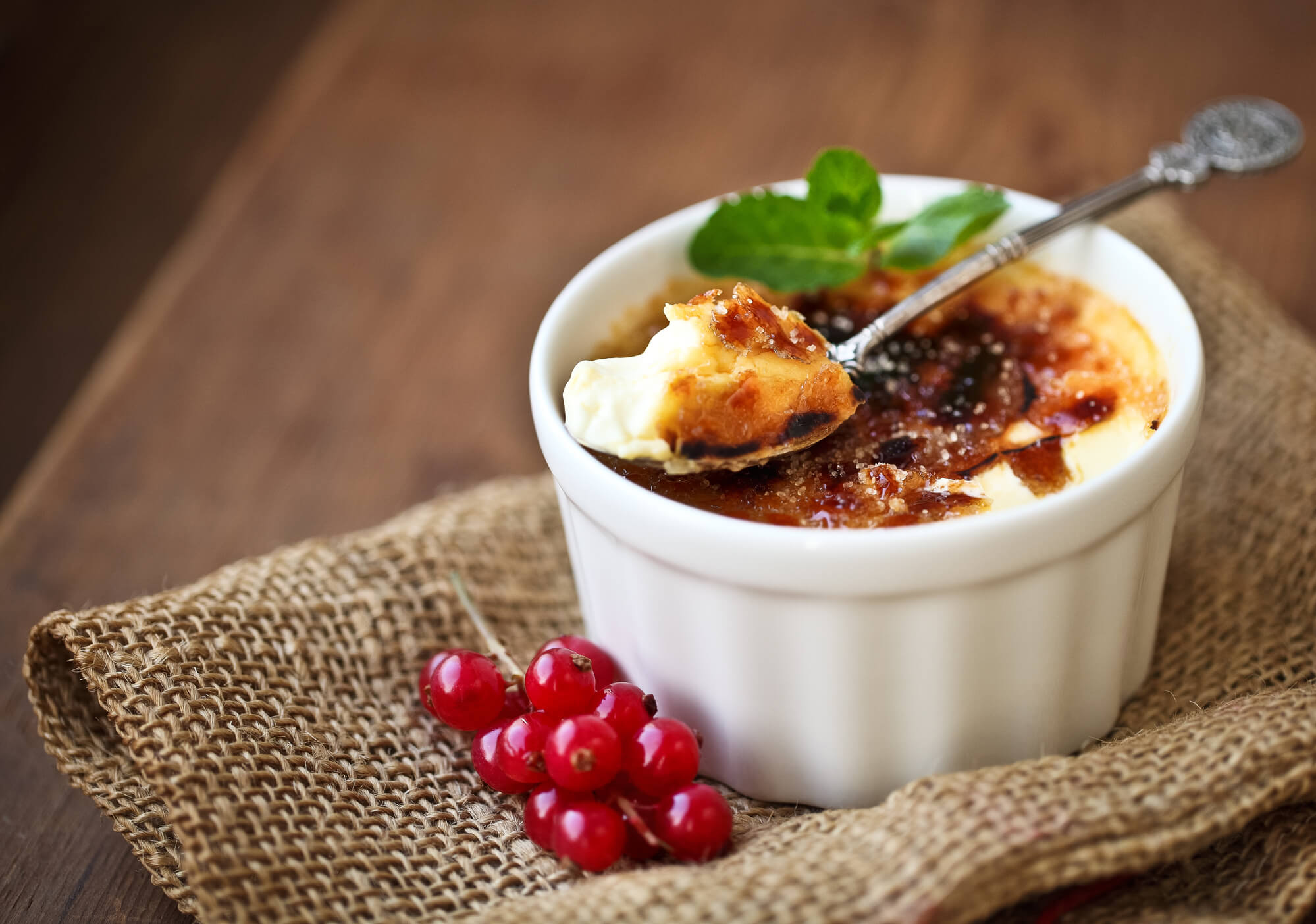
Creme brulee (cream brulee, burnt cream) with red currant and mint
Crème brûlée has become a globally recognized emblem of French cuisine. The delicate baked custard capped with a crisp burnt sugar crust encapsulates the refined decadence that France’s food culture is renowned for. Beloved for its elegant simplicity, crème brûlée remains a dessert Parisian restaurants always have on hand to satisfy local tastes and travelers seeking to savor an edible piece of France.
The roots of crème brûlée stretch back to 17th century France. Cooks prepared creamy custards rich with egg yolks, cream and vanilla then baked them in the oven. However, the signature hard caramelized shell came later. In fact, the French term brûlée translates to ‘burnt’ describing this topping.
By the 18th century, recipes for crème brûlée included topping the cooked custard with raw sugar that hardened under a salamander broiler or with a hot fire shovel. This step added contrasting texture and gave the dessert its name. The rich yet light custard with glazed sugar crust became refined and recognizable as the quintessential crème brûlée.
It was restaurants in Paris that popularized crème brûlée with the bourgeoisie and aristocracy in the late 19th century. Elegant dining establishments made it a staple on menus, knowing its silky custard and satisfying crack of the sugar topping would delight guests. Crème brûlée became synonymous with French haute cuisine.
By the mid-20th century, crème brûlée earned global fame as a quintessential French dessert. Its presence on French restaurant menus worldwide solidified its cultural status. While creme brulee enjoys international popularity today, the French maintain a special reverence for the dessert that exhibits refinement and echoes flavors from their childhoods.
Beyond taste, the ritual around tapping the caramelized shell and uncovering the velvety custard adds a sensory experience that delights. Food lovers continue to seek out crème brûlée in Parisian cafes and bistros as a way to blissfully culminate a French meal. It remains de rigueur in fine restaurants as the refined finish to showcase French cuisine’s balance of richness and finesse.
Simple yet elegant, crème brûlée encapsulates the enduring essence of French cooking. Its indulgent flavors and textures honor France’s culinary foundations while the cracked sugar crust provides a fitting finale of drama and flair. A baked custard may seem humble, but crème brûlée will always maintain its status in France as a dessert that celebrates and satisfies.
Japan – Sushi

As one of Japan’s most recognizable foods worldwide, sushi exemplifies the nation’s delicate culinary arts and culture. This simple dish of vinegared rice combined with seafood or vegetables requires meticulous technique and devotion to freshness. Beyond its taste, the ritual around sushi embodies core Japanese values like skill mastery, subtle beauty, seasonal appreciation and social customs.
Sushi originates from the practice of fermenting fish with salted rice in ancient Southeast Asia and China. This preserved fish in rice then spread to Japan around the 8th century. By the early 19th century “Edo-mae sushi” emerged in Tokyo, sold by vendors as fast food like modern sushi. This was the start of sushi’s identity as quickly made, ready-to-eat morsels.
After World War II, sushi received a major boost in popularity from the growth of refrigerator use in Japan. This allowed sushi chefs to serve fresh fish rather than needing to preserve it. Sushi shifted from a way of preserving fish to a refined delicacy celebrating seasonal ultra-fresh seafood.
Expanded fish imports and global interest in Japanese cuisine drove sushi’s spread worldwide. But in Japan, sushi remains deeply rooted in culture and etiquette. Sushi chefs undertake years of apprenticeship to learn proper knife skills, cooking rice, and fish selection. Elite itamae head restaurants while young shokunin do preparation work.
Sushi counters foster social interaction between sushi chef and patron. Subtle exchanges convey mutual respect and appreciation. Ordering sushi also follows certain norms from directionally progressing by price and taste to knowing which pieces to brush with soy sauce vs eating as-is.
While sushi may appear simple, the intricacies around rice, slicing techniques, knife skills, and seafood require great finesse. Mastery is a lifelong journey. This combination of complexity, subtlety and constant refinement is distinctly Japanese.
In this way, sushi exemplifies the Japanese reverence for artistry, detail, and social order in ways that transcend the food itself. Sushi carries a cultural weight in Japan that elevates it from mere sustenance to edible philosophy. Even as sushi becomes casual fare globally, in Japan, at its heart, sushi nourishes shared social customs and timeless traditional values.
USA – Hamburger and fries

Nothing says American cuisine more than a juicy hamburger paired with hot, crispy french fries. This classic meal combines influences from various immigrant cultures into a quintessential comfort food unique to the United States. More than just tasty, burgers and fries represent American innovation, abundance, and cultural identity.
Tracing origins takes us back to Hamburg, Germany where cooked chopped “Hamburg Style Beef” was served between bread. German immigrants brought this dish to America in the 1800s. The “hamburger sandwich” gained popularity through the late 19th and early 20th centuries at fairs, food stands, and restaurants.
Several claims exist over who invented modern hamburger buns and ground meat patties in the U.S. during this era. But burgers undeniably took hold as affordable, filling American diner fare. The 1921 opening of White Castle established the first burger chain, predating McDonald’s by over two decades.
Like burgers, french fries also have disputed American origins but may derive from frying potato strips in the 1800s. Fries became standard diner and fast food sides, often cooked in beef tallow for flavor. The reliable duo of burgers and fries became ingrained in post-WWII American culture.
McDonald’s major innovations like assembly line production and franchising rapidly spread burgers nationwide in the 1960s and beyond. Burger variations like cheeseburgers, bacon burgers, sliders and more continue advancing the humble sandwich. Burgers remain ubiquitous on menus and in home cooking as quintessentially American.
Beyond flavor, burgers represent American freedom of choice and identity. Their build-your-own concept promotes uniqueness and ownership over one’s meal. Burger toppings allow personal expression. Hefty burgers and fries also symbolize American abundance.
As red-blooded as apple pie, burgers and fries now epitomize American cuisine internationally. While many nations have adopted and localized this import, the hearty, satisfying burger and fry meal remains iconically American. From backyard barbecues to Fourth of July celebrations, few foods evoke Americana like this beloved tasty tandem.
Vietnam – Pho
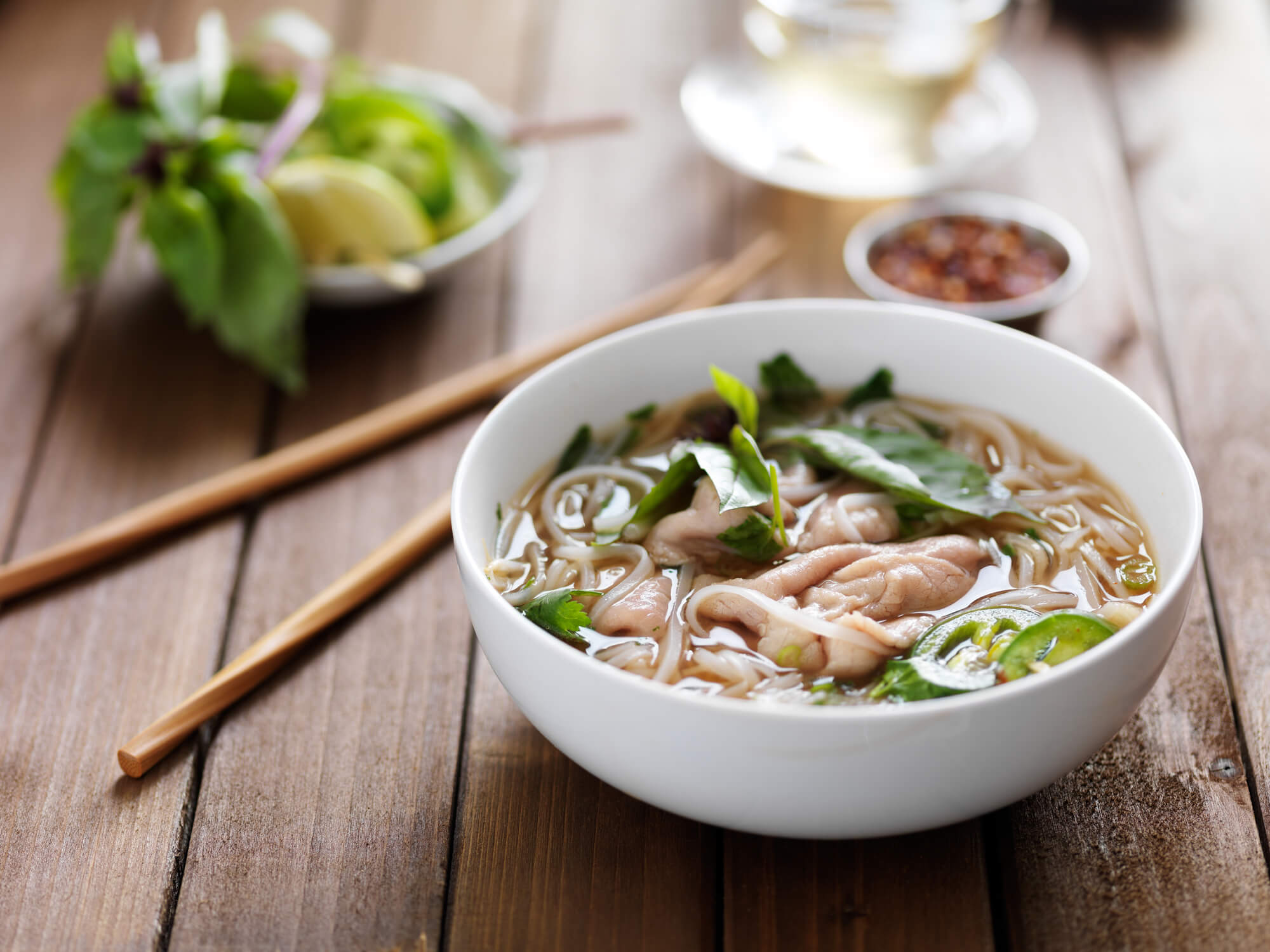
vietnamese beef pho with chopsticks on wooden table
Pho, the iconic Vietnamese noodle soup, has become a culinary symbol of Vietnam and an important part of its national identity and culture. Made from broth, rice noodles, herbs, and meat, pho originated in northern Vietnam in the early 20th century and has risen from humble street food origins to become Vietnam’s most famous food.
The popularity of pho has steadily grown both in Vietnam and abroad. Today it is widely considered Vietnam’s national dish, and it has become a culinary ambassador that represents Vietnamese culture and cuisine around the world. Pho shops can be found in most towns and cities across Vietnam, and the dish is eaten regularly for breakfast and as comfort food. The aromas of simmering pho broth and noodles are synonymous with the streets of Vietnam.
Beyond its everyday role as nourishing food, pho has deeper cultural significance. Its origins reflect Vietnam’s resilience and resourcefulness amidst struggle. Pho likely evolved from the French pot-au-feu broth, incorporating affordable rice noodles during times of hardship. The Vietnamese customized it using local herbs and flavors into a dish that provided inexpensive sustenance. Pho’s early role as subsistence food for the working class has made it a symbol of accessibility and community in Vietnamese food culture.
The comforting broth, noodles, and meat have also made pho a cultural symbol of healing and warmth. It is commonly eaten when people are sick or as a restorative meal after a night out. The term “phở” even translates loosely to “done well” or “affluence.” This has positioned pho as a nurturing food that provides care and strength.
As Vietnamese communities have spread internationally, pho has traveled with them. Pho restaurants are now commonplace in diverse food scenes from New York to Paris. The dish has evolved abroad, incorporating global ingredients and fusions while retaining its essence. This had enabled pho to represent the Vietnamese diaspora and connection to their heritage. The worldwide popularity of pho has boosted Vietnam’s cultural exports and recognizability.
Pho has risen from humble beginnings to be celebrated as an icon of Vietnam. The aromatic soup reflects resilience, community, healing, and economic opportunity. For both domestic and overseas Vietnamese, pho evokes memories of home. The dish continues to nourish and comfort, demonstrating the warm hospitality that defines Vietnamese cuisine to the world. Whether enjoyed locally or globally, pho is a tasteful ambassador of Vietnamese identity.
Germany – Sauerbraten
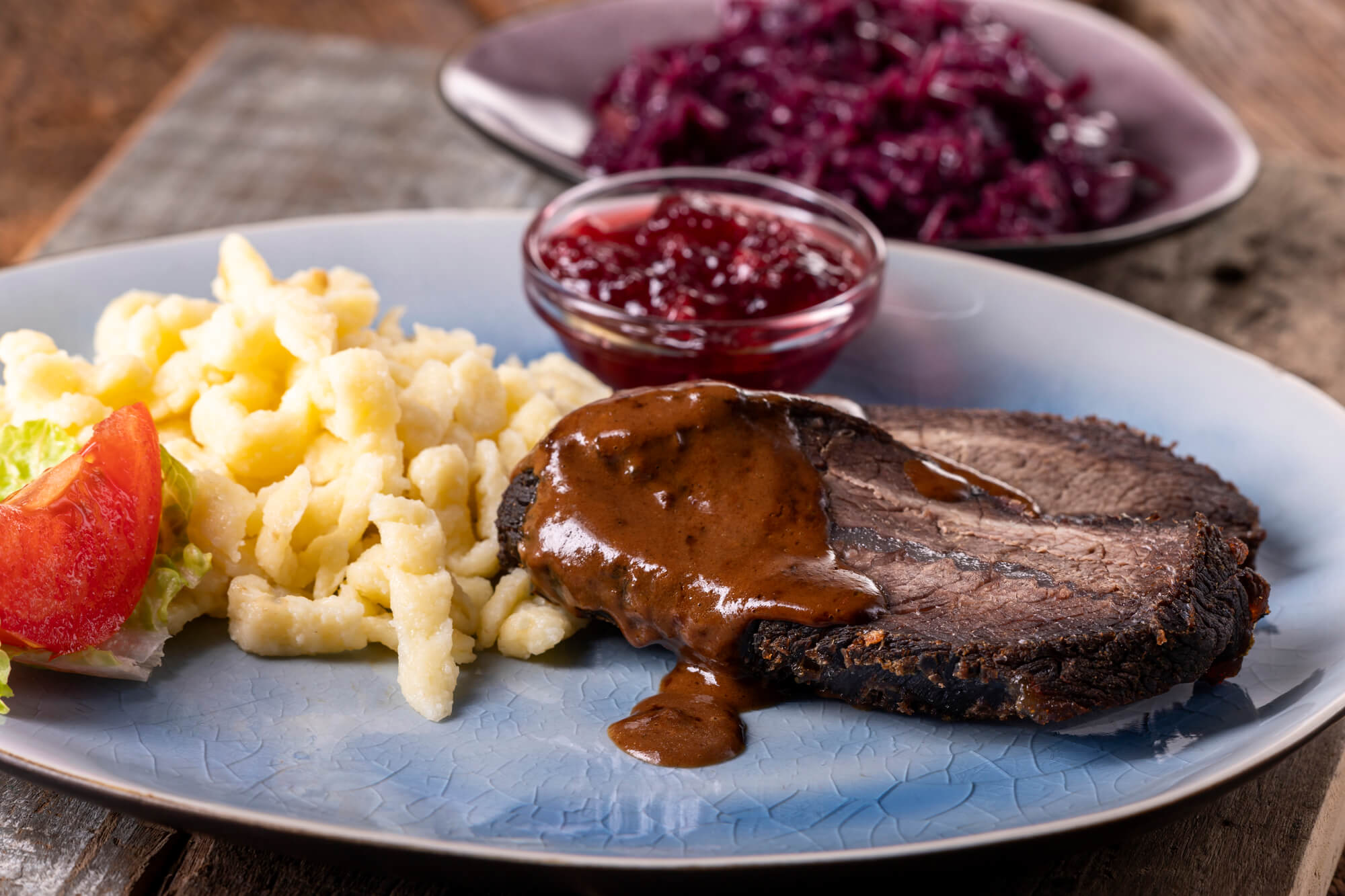
closeup of a german sauerbraten with dumplings
Sauerbraten, a pot roast marinated in a sweet and sour sauce, holds an important place in German food tradition and national identity. This flavorful, meaty comfort food reflects Germany’s culinary history and its status as a cherished national dish.
The origins of sauerbraten stretch back to medieval times. The acid marinade was originally a way to tenderize less choice cuts of meat before effective refrigeration was available. The marinade evolved to include spices and sweet elements to balance the tartness. This demonstrated early German resourcefulness and imagination with ingredients.
Several regions developed their own local variations on sauerbraten, reflecting Germany’s geographic diversity. For instance, in Franconia the marinade often includes beer. In other areas like Rhineland, sauerbraten may use red wine or integrate regional fruits. These localized versions showcase Germany’s culinary regionality.
Beyond the marinade, the braising method also connects sauerbraten to Germany’s climate and culture. Braising meat for hours in a covered pot was ideal for the winter months in northern Europe. The gentle cooking resulted in fork-tender meat that provided comfort during colder seasons. Serving sauerbraten with traditional sides like dumplings and red cabbage completed a hearty, filling meal.
Sauerbraten’s status as a festive dish reserved for Sundays, holidays, and celebrations also gave it cultural importance beyond the everyday. The time-consuming preparation and distinctive sweet-sour flavor made it special meal reserved for gatherings with family and friends through generations. It developed a nostalgic connection to cherished memories and maintaining traditions.
The global diaspora of Germans brought sauerbraten recipes with them as a taste of home. Adding traditional sauerbraten to restaurant menus was a cultural bridge used to preserve German heritage and identity abroad. The dish remains a staple in German-style restaurants internationally today.
Modern preparations of sauerbraten demonstrate how traditional dishes evolve over time. Cooks now have easier access to high-quality meat cuts that do not require marinating. Some versions skip the marinade but retain the braising method and flavors. Updated sides like potato pancakes complement the classic sauerbraten flavors for new generations.
Through its long history, geographic variations, and cultural roles in holidays and remembrance, sauerbraten has become an anchor dish in Germany. It reflects the local ingredients, cooking methods, regional diversity, and immigrant experiences that have shaped German cuisine. The balance of tart, sweet, and savory in sauerbraten is a metaphor for the blend of tradition and innovation that moves national dishes forward through the ages. For both locals and those of German descent worldwide, sauerbraten remains a touchstone dish that celebrates German identity.
Belgium – Moules frites (Mussels and fries)
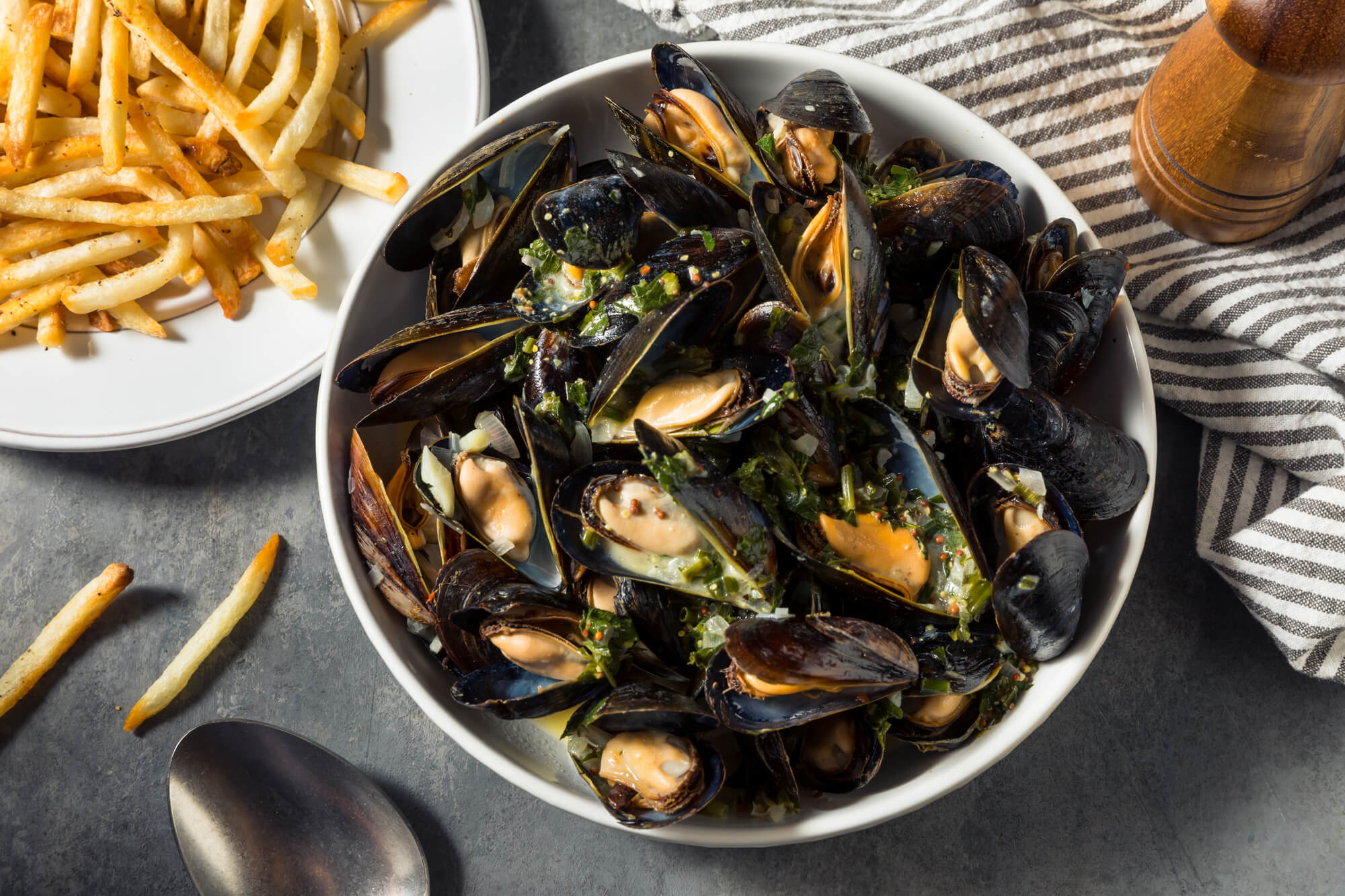
Homemade Moules Frites Mussels and Fries with a White Wine Sauce
Moules frites, or mussels with fries, holds a beloved place as one of Belgium’s national dishes. This combination of steamed mussels and crispy fries showcases key aspects of Belgian cuisine and culture.
The abundance of high-quality mussels in the North Sea has made them a staple of Belgian cuisine dating back centuries. Mussel farming along the coastline allowed seafood to thrive as an inland dish. Simple preparations like moules mariniere became signatures of Belgian food identity early on. Adding the iconic fries rounded out the meal into a quintessential Belgian comfort food.
Belgium’s renowned dedication to perfecting the humble fried potato as a national specialty is also exemplified in moules frites. While fries originated in France, Belgians elevated the preparation to an art form. Frying potatoes in beef fat rather than oil, double-frying for extra crispiness, and offering a multitude of sauces demonstrate Belgium’s fixation with fries. Pairing them with mussels brings together two icons of Belgian food culture in one dish.
Moules frites also provides insight into Belgium’s geographical diversity. Mussels hail largely from the coastal Flemish region of Belgium, where seafood reigns. Meanwhile, fries have roots in rural Wallonia, amid Belgium’s potato country. Bringing together ingredients from north and south Belgium spotlights how the cuisine represents the entire nation.
The casual, communal nature of moules frites also encapsulates the welcoming Belgian dining culture. Mussels are meant to be eaten with your hands, and fries are best shared among friends. The dish is served in casual restaurants and cafes for easy enjoyment and bringing people together over simple, tasty food. This speaks to the laid-back and convivial spirit that defines mealtime in Belgium.
Internationally, moules frites has become an ambassador for Belgian food and culture. The dish frequently appears on menus at Belgian restaurants abroad. For those craving a taste of Belgium, crispy fries laden with mussels, garlic butter, and herbs delivers sensory nostalgia. The dining experience transports diners to Belgium through iconic flavors.
Yet moules frites has also proven itself capable of evolving with the times. Nouvelle cuisine techniques have led chefs to elevate the dish, such as using artisanal stocks and unique spice blends in the broth. Modern twists like adding curry, cream, or cheese build on the traditional dish. This demonstrates how Belgium keeps its cuisine dynamic while still celebrating history.
At its core, moules frites symbolizes the very spirit of Belgian dining and heritage. The irresistible combination of seafood and potatoes encapsulates the country’s varied regions and ingredients. Eating the dish is a lesson in the casual, friendly essence of mealtime in Belgium. Simple yet satisfying, moules frites has endured as a beloved national dish.
Argentina – Asado (Grilled meats)
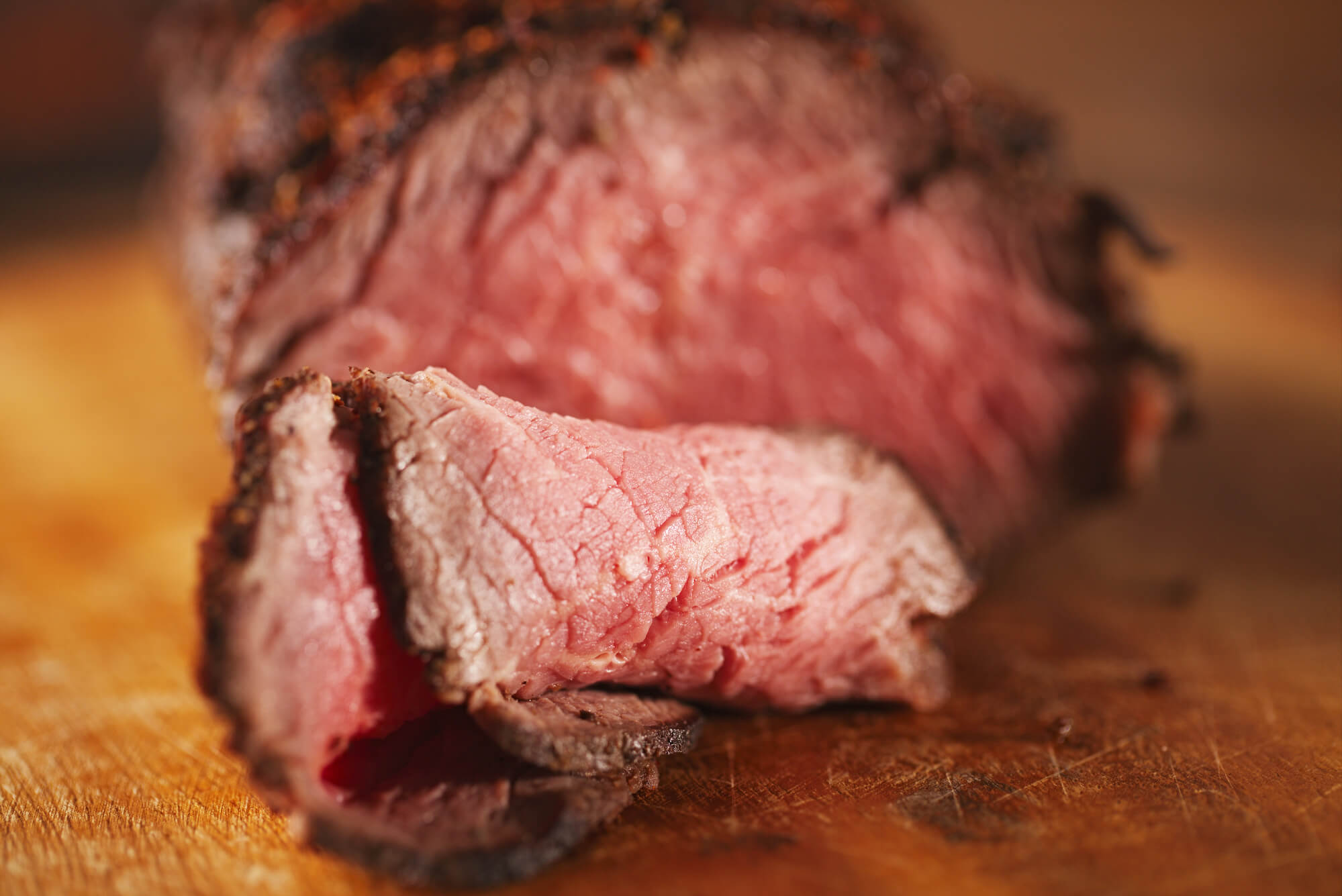
Asado, the practice of grilling beef over an open fire, holds an important place as a national tradition in Argentina. More than just a cooking method, asado encapsulates key aspects of Argentine culture and identity.
The open-fire style of cooking originated with gauchos, the cowboys of the Argentinian pampas. Asado was a practical way to cook beef when herding cattle across the plains. The simple preparation of seasoning and grilling beef exemplified the outdoor lifestyle of the gauchos. Asado developed into a social ritual among gauchos, bonding them through shared meals.
These origins reflect the significance of cattle and ranching in Argentina as part of its national identity. Cattle drives across the pampas allowed asado to become ingrained in Argentine culture. The availability of renowned grass-fed Argentine beef also contributed to asado becoming a signature dish.
The communal aspect of asado remains integral today. Families and friends gather around a shared fire, chatting while meats cook slowly over wood or charcoal. This reflects the cultural value Argentina places on slowing down to enjoy food and company. Sharing food and conversation over many hours is at the heart of asado traditions.
Ingredients beyond beef have evolved with Argentinian cuisine while retaining the asado spirit. Chorizo sausage, morcilla blood sausage, sweetbreads, and vegetables like tomatoes and peppers are often cooked over the same fire as meat. Lively chimichurri sauce accompanies the array of foods. Asado showcases a range of nationally beloved flavors unified by the open-fire cooking.
Restaurant culture in Argentina has also integrated asado traditions, with many establishments designed around large shared grills. Whether cooking at home or dining out, the smoky smells and sharing plates family-style maintain the symbolic spirit of togetherness associated with asado. The ritual spans socioeconomic boundaries as a tradition accessible across all levels of Argentine society.
Asado also connects Argentines with ancestral roots across generations. Many families pass down long-held recipes and grilling tips that form a sense of lineage. The cooking method ties younger generations back to historic gaucho cultural identity. Asado traditions also connect those in the Argentinian diaspora to fond memories of meals back home.
Beyond cuisine, asado infuses Argentine art, literature, and soccer culture. It has become an identifier for Argentinian identity. The communal fire and the act of sharing meat and conversation have come to embody key social values that bring loved ones together. Asado has evolved into more than just a cooking style in Argentina by encapsulating national identity.
Greece – Moussaka
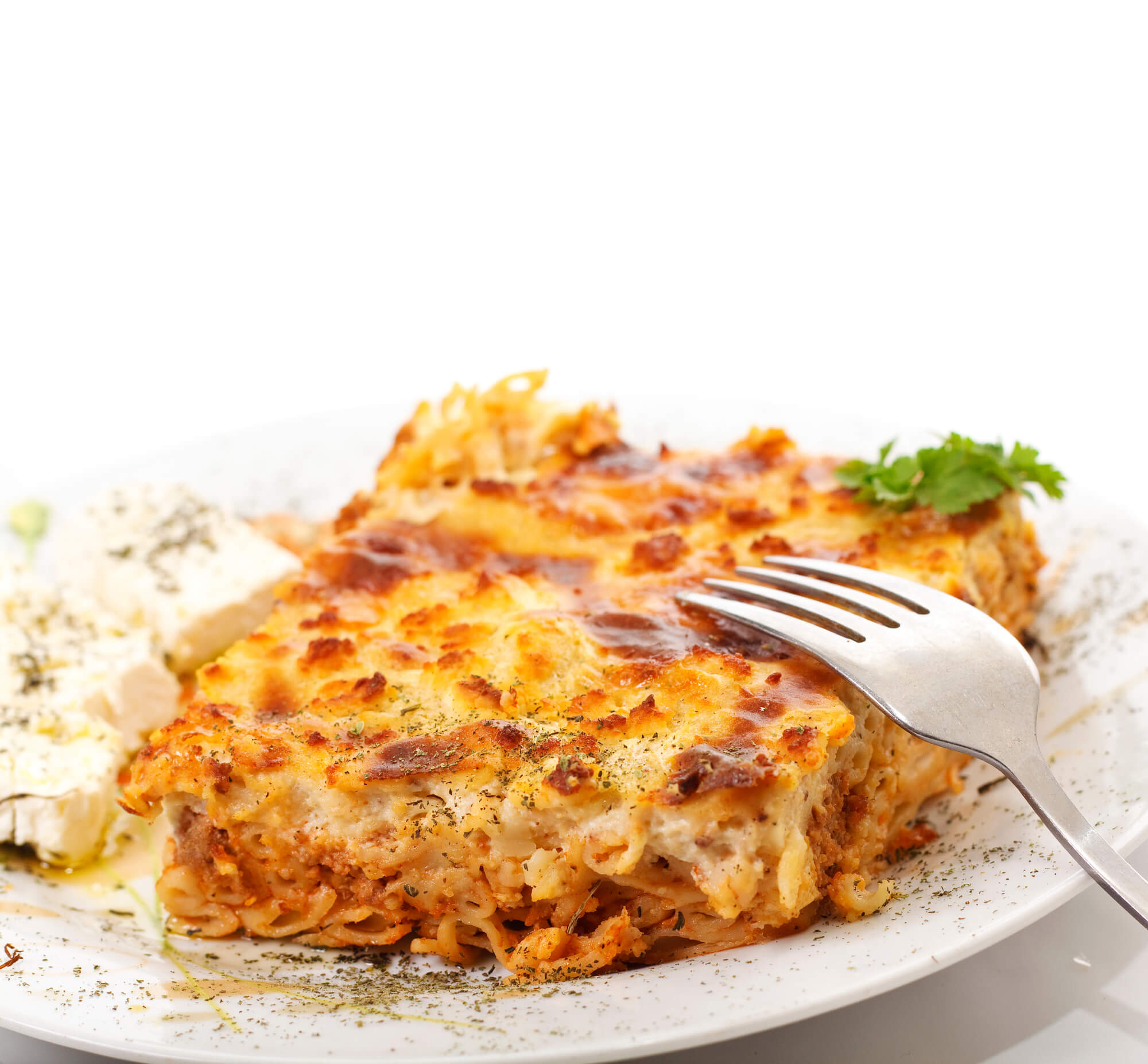
Moussaka, a layered casserole of eggplant, tomatoes, and minced meat, stands as Greece’s beloved national dish. More than just a recipe, moussaka represents the diversity of Greek food traditions and cultural identity.
The origins of moussaka demonstrate the influence of different cultures and eras on Greek cuisine. The eggplant base likely has Arabic roots, while the meat layers reflect Ottoman influence. The béchamel topping came later with a French accent. This fusion of flavors created a dish unique to Greece as a crossroads of Europe and the Middle East.
Regional variations on moussaka also showcase Greece’s geographic and cultural diversity. On the islands, you may find moussaka made with lamb and topped with yogurt instead of béchamel. In the north, zucchini sometimes substitutes for eggplant. Such adaptations highlight how local ingredients and tastes diverse the national dish across Greece’s landscape.
Preparing moussaka is labor intensive, as it requires cooking and layering each element separately before baking. This shows how time and care in cooking is valued in Greek food culture. Taking shortcuts is not an option for an authentic moussaka. The work put into crafting the casserole imbues it with love and tradition.
Beyond households, moussaka also appears frequently on the menus of Greek restaurants and tavernas. It satisfies as a hearty main course or meze platter item. The scent of a moussaka baking in an oven fills a restaurant with hominess and the promise of comfort. Its popularity on restaurant menus cement its standing as a fundamental Greek food.
Culturally, moussaka also holds nostalgic significance by connecting Greek citizens and families across generations through shared history and identity. Preparing moussaka reawakens memories of family meals, holidays, or time spent in one’s ancestral village. Eating it evokes feelings of home and cultural belonging.
The global Greek diaspora has also brought their cherished moussaka recipes overseas. Making the hearty casserole provides comfort and continuity with Greek culture even for those living abroad. The welcoming no-fussness of the dish has allowed it to translate easily across borders while remaining quintessentially Greek.
Over many influences and evolutions, moussaka has endured as an iconic Greek food. More than just a layered bake, it represents the cultural diversity within Greek cuisine and society. Moussaka’s role in family meals and cultural nostalgia has solidified its significance. For Greeks within Greece and those across the globe, moussaka remains a flavorful tie to Hellenic identity.
Turkey – Kebab

Kebab holds an important place in Turkish cuisine and culture as more than just a meat dish. The origins of kebab in Turkey stretch back centuries to the time of the Ottoman Empire. Skewering and grilling slices of lamb or mutton was an efficient way to cook and feed royal armies. This method spread across the Middle East as the empire expanded. Over time, the practical food of soldiers evolved into a cornerstone of Turkish cuisine and identity.
Many regional variations of kebab developed across Turkey’s diverse landscape. Adana kebab uses a spicy ground meat. Urfa kebab employs a thicker cut with peppers and tomatoes. Istanbul kebab pairs cubes of lamb with eggplant. Despite the variations, the unifying essence is meat and vegetables on a skewer over flame. This simplicity and customizable nature of kebab allowed it to become ubiquitous.
Today, kebabs are synonymous with Turkish street food and casual dining. Vendors ply the streets with small portable grills, filling the air with the smoky aroma of grilled meat. Kebab shops can be found on every corner, offering fast meals combined with an array of salads and sides to be shared family-style.
Beyond sustenance, kebabs are part of Turkey’s intangible cultural heritage. The communal act of cooking and eating kebabs promotes social bonding. Kebab masters pass down their grilling techniques through generations, exemplifying culinary traditions. Whether at a roadside stand, a family gathering, or a holiday celebration, kebabs reflect Turkey’s cuisine, history, and hospitality.
Morocco – Couscous
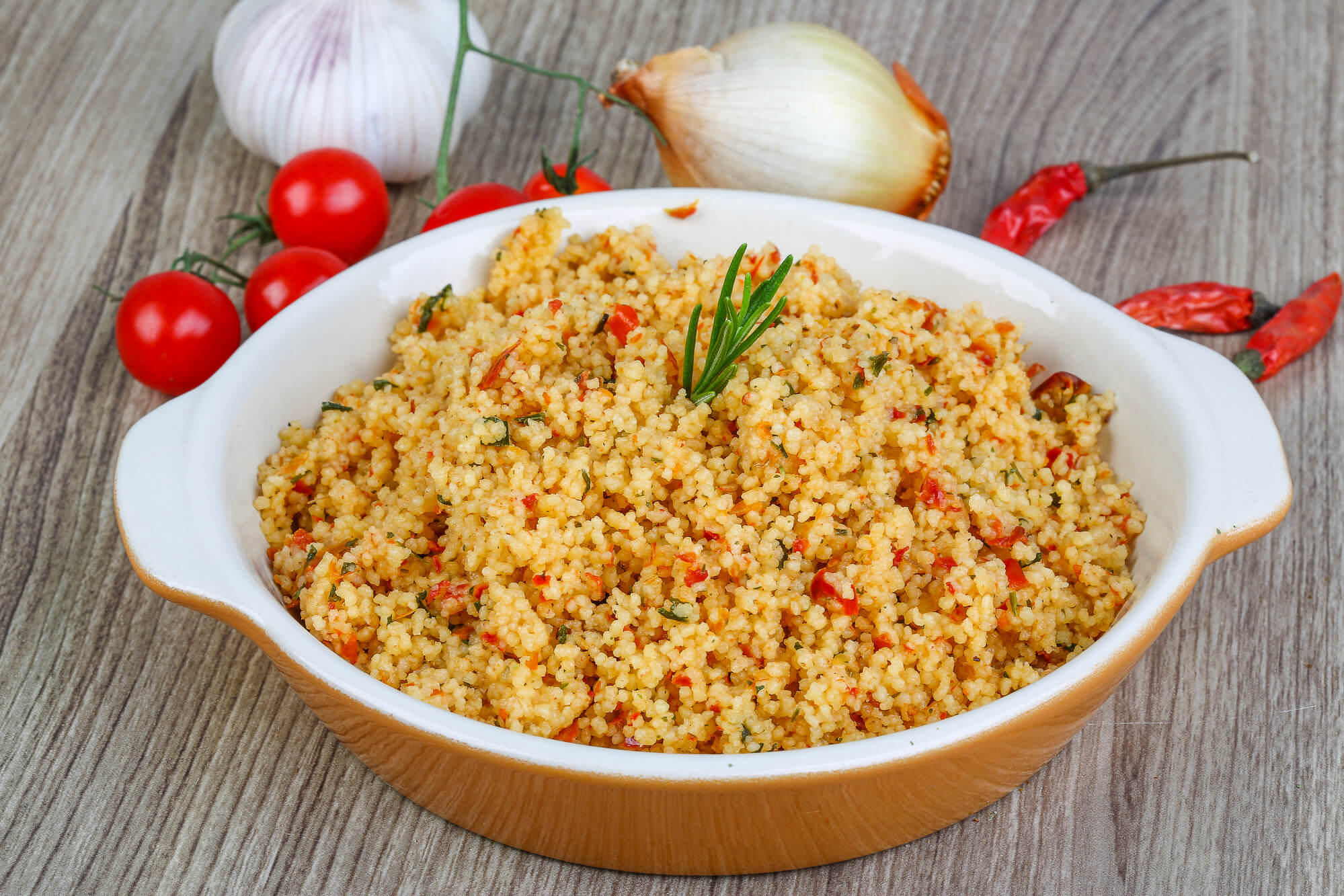
Arabic traditional cuisine – Couscous with tomato and green onion
Couscous holds an important place as a national dish across North African cuisines, especially in the Maghreb region. The steamed balls of semolina wheat paste serve as a staple carbohydrate and centerpiece of meals. Beyond just food, couscous carries cultural significance and heritage.
The origins of couscous trace back to over a thousand years ago in North Africa. Hand rolling semolina dough between the palms to create small pellets emerged as a way to easily serve and eat a grain-based dish. Over generations, preparing couscous grew into a labor of love and skill passed down among families.
Today, couscous remains an essential component of Maghreb cuisine. It accompanies tagines, stews, and vegetables as a base of the meal. Locals eat mounds of couscous daily with regional variations in ingredients and cooking methods. Couscous unites different cultures and classes, enjoyed in simple home meals or elaborate feasts.
Eating from a communal platter symbolizes family and community in North African culture. Gathering around a dish filled with steamed couscous, topped with meat, fish or vegetables reinforces bonds. It represents hospitality, abundance and coming together.
Beyond sustenance, couscous holds deeper meaning. Celebrations feature elaborate couscous dishes, reflecting its importance. Preparing couscous by hand demonstrates love, care and cultural heritage. The time-consuming process turns couscous into more than just food.
Across North Africa, couscous remains a constant staple and cultural symbol. The simple steamed dough transcends its basic ingredients to represent family, community and hospitality. More than just a cereal, couscous has become intertwined with cultural identity across the Maghreb region.
Australia – Pavlova

Pavlova meringue cake with fresh berries on white background
Though a simple meringue dessert, pavlova holds a cherished role as a national dish in Australia and New Zealand. With its crisp shell and soft marshmallow center topped with cream and fruit, pavlova encapsulates the countries’ culture and identity.
The dessert’s origins stretch back to the 1920s, either conceived in honor of Russian ballerina Anna Pavlova or named for the light, airy nature of her dances. Since then, pavlova has become ingrained in Australasian cuisine and culture.
The meringue dessert uniquely showcases local ingredients. The egg whites used to create its delicate structure came originally from native Australian emu eggs. Toppings like kiwi, pineapple and passionfruit put the flavors of Oceania on display. Ingredients from the land and region come together in pavlova.
Making pavlova also highlights Australasian cooking methods and identity. Baking the meringue requires patience and care in technique, demonstrating shared values. The dish must sit overnight after cooking to allow the centers to soften fully. Much skill and time go into crafting the perfect pavlova.
Culturally, pavlova graces holiday feasts, barbecues and milestones as a celebratory dessert. It accompanies casual backyard gatherings as often as formal occasions, representing the laidback Australian ethos. Sharing pavlova brings people together in community and hospitality.
With roots in the Antipodes and showcasing local ingredients at their finest, pavlova has become globally associated with Australia and New Zealand. For locals and those from the region, it evokes a common sense of identity and nostalgia. Though only a sweet treat, pavlova carries the essence of Australasian culture.
Brazil – Feijoada (Black bean stew)
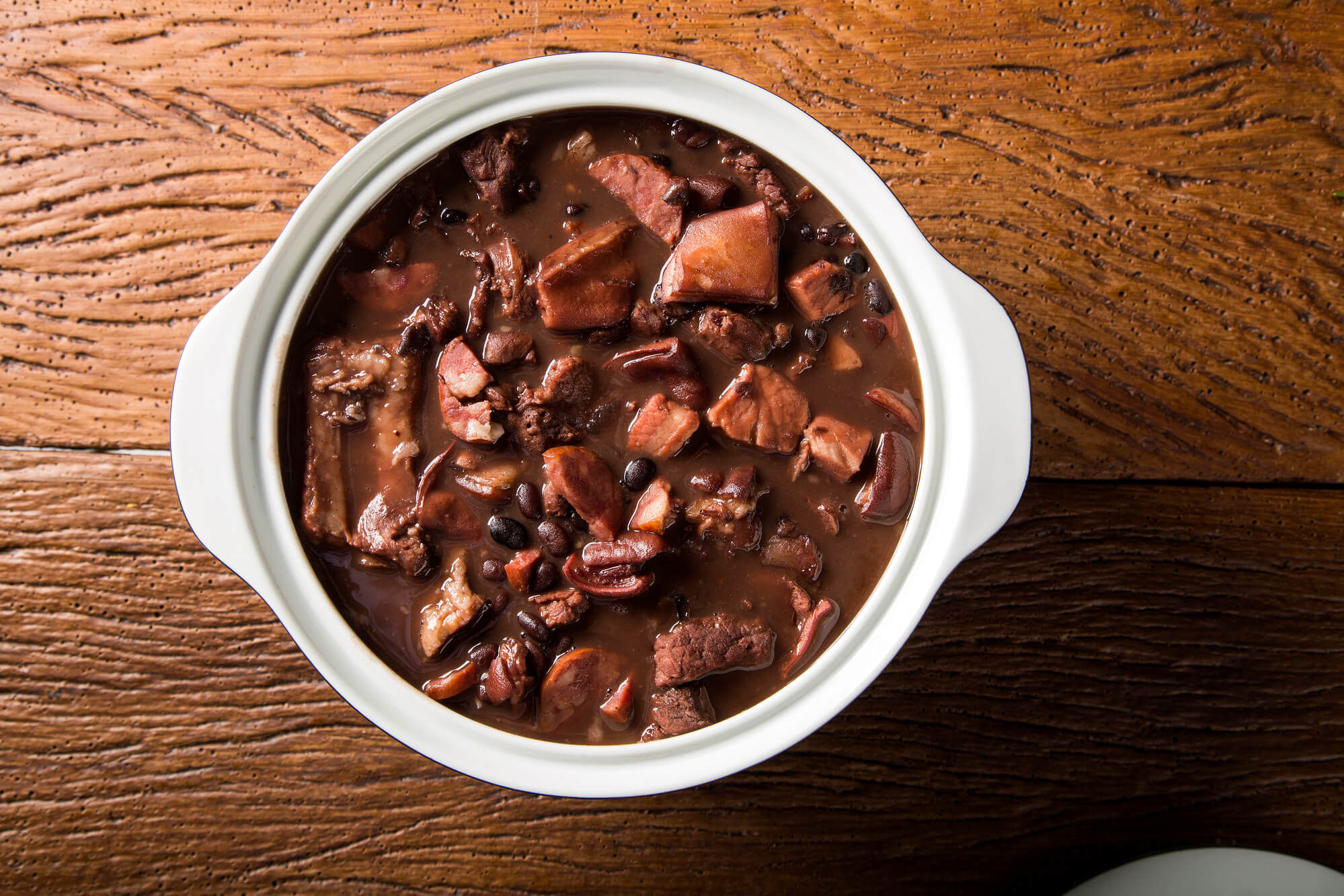
Brazilian Feijoada
Feijoada stands out as Brazil’s national dish, representing the country’s culture and mélange of influences. The hearty black bean and meat stew encapsulates Brazil’s history and modern food identity.
The origins of feijoada trace back to the colonial era in the 16th century. Portuguese colonists combined beans brought from Africa with cuts of pork from Europe to create a new, distinctly Brazilian dish. Feijoada was affordable, nourishing sustenance that transcended social classes.
This foundation of modest ingredients established feijoada’s enduring status. Brazilians claimed the stew as their own by adapting and perfecting the recipe over generations. Regional variations emerged adding local produce like oranges, cassava flour and peppers. The flexibility allowed feijoada to spread nationwide.
Beyond sustenance, feijoada took on greater cultural meaning. Its emergence reflected Brazil’s racial diversity. This stew fused food traditions from indigenous South Americans, enslaved Africans, and Portuguese colonists into a unified national dish.
The time-consuming preparation also gave feijoada significance. The labor involved imparted nostalgia and brought families together. Hours of simmering meat with beans encouraged conversation and community with the meal itself at the center.
Today feijoada appears at casual lunches and formal events alike as a quintessential Brazilian food. The richness showcases national pride in a dish born in Brazil. The black bean base provides continuity from its early days as an affordable peasant dish to an iconic national favorite.
From history-filled origins to its embodiment of Brazil’s blended culture, feijoada has become an edible symbol. More than a stew, it represents the essence of Brazilian traditions and identity through food.
South Africa – Bobotie (Spiced minced meat pie)
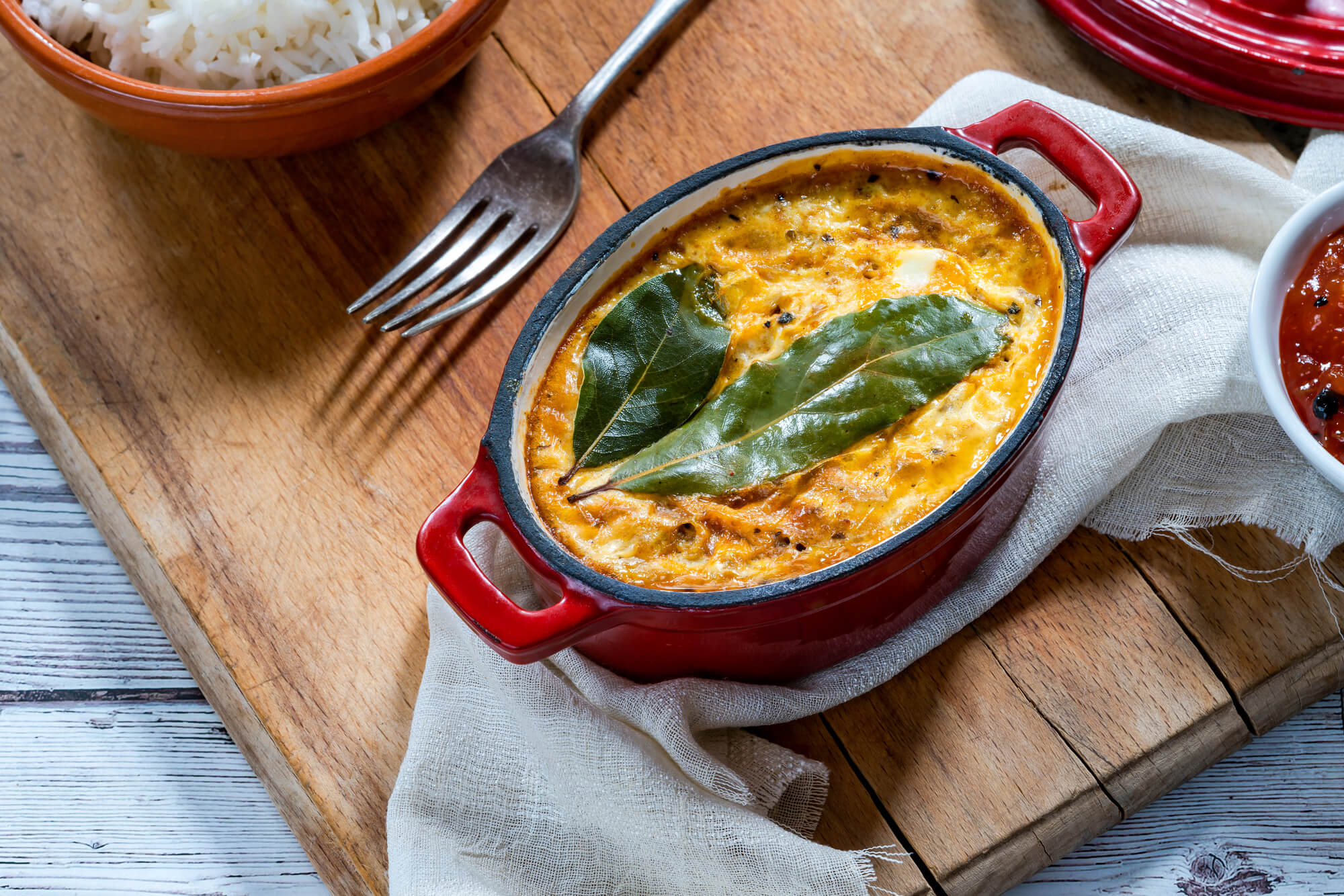
Bobotie – South African curried minced meat baked with egg-based topping
Bobotie has developed into South Africa’s distinctive national dish, reflecting the country’s diverse cultural influences and identity. The lightly spiced baked minced meatloaf contains elements traced back to the Dutch and Indonesian settlers of Cape Town. Over generations, bobotie evolved into a specialty unique to South Africa.
Ground meat seasoned with curry spices like turmeric, cumin and coriander provide the base of bobotie. This reflects Eastern influence from Malaysia and India brought by Cape Malay immigrants. Topped with a custard egg mixture and then baked, the dish integrally blends African, European and Asian ingredients and cooking techniques into one.
The integration of these diverse cultures into one baked dish mirrors the evolution of South African identity. The hybrid nature of bobotie came to represent the convergence of different peoples into one united national cuisine. Just as South Africa emerged as a Rainbow Nation seeking harmony after apartheid, bobotie symbolizes the blending of culinary traditions into one cohesive dish.
Bobotie holds nostalgic significance as well, reminding South Africans of home and culture no matter where they live. The dish transcends ethnicity, language or class as a meal enjoyed nationwide. The spiced aroma of bobotie baking signifies community, family bonding and celebration in South African culture.
More than just food, bobotie tells the story of South Africa’s past and present through cuisine. From its colonial ingredients to its enduring popularity nationwide, bobotie reflects the convergence of cultures and the shared values that define South African identity. The unique baked dish encapsulates the spirit and pride of the nation.
Egypt – Kushari
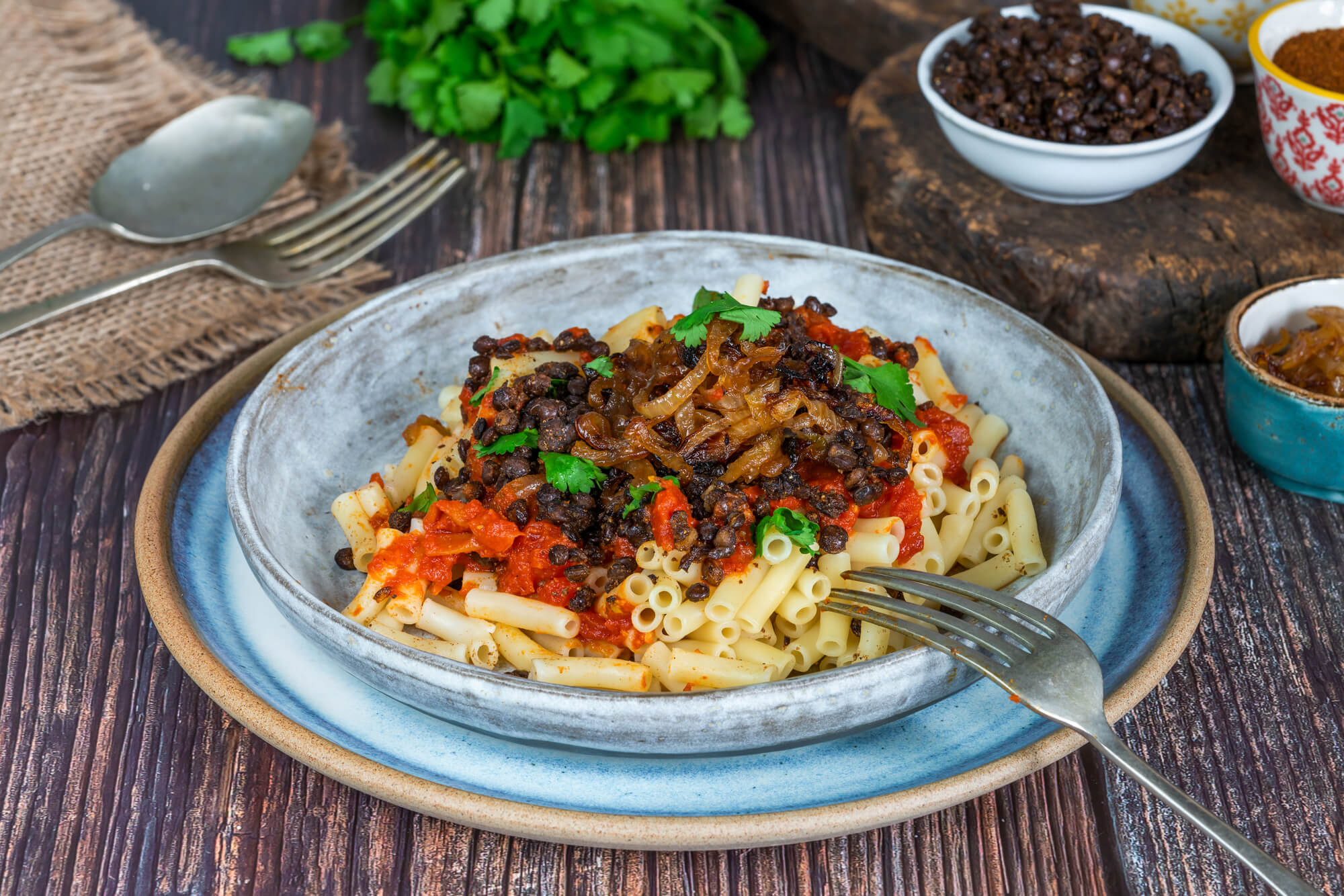
Kushari – Egyptian vegetarian dish with lentils, spiced tomato sauce and macaroni topped with fried onions
Kushari serves as a quintessential everyday meal and national street food in Egypt. The mix of rice, lentils, pasta and crispy onions seems simple but offers layers of texture, flavor and culinary history.
The base ingredients of rice and lentils reflect Egypt’s location between Europe, Asia and Africa. The rice came from Asia while lentils entered North African cuisine from the Middle East. Pasta later arrived with Italian influence during the 19th century. Egyptians combined these staples along with vermicelli and chickpeas to create kushari.
Toppings like caramelized onions, garlic vinegar and chili sauce add complementary flavors and texture that complete the dish. Regional variations on kushari emerged but the core combination of grains and pulses unified it across Egypt’s cuisine.
Beyond the diverse ingredients, kushari’s role as an affordable, filling street food made it a nationwide staple. From crowded city alleyways to small villages, mobile kushari stands feed Egyptians of all classes and backgrounds. The dish fuels the day with a quick carbohydrate and protein boost.
Kushari represents Egypt’s unique food fusion in a simple, satisfying dish. The mix of historical influences blended through the local palate created a one-of-a-kind carbohydrate medley symbolic of Egypt’s multi-cultural population. For Egyptians, kushari’s taste and ubiquity make it the quintessential everyday national food.
Russia – Beef Stroganoff
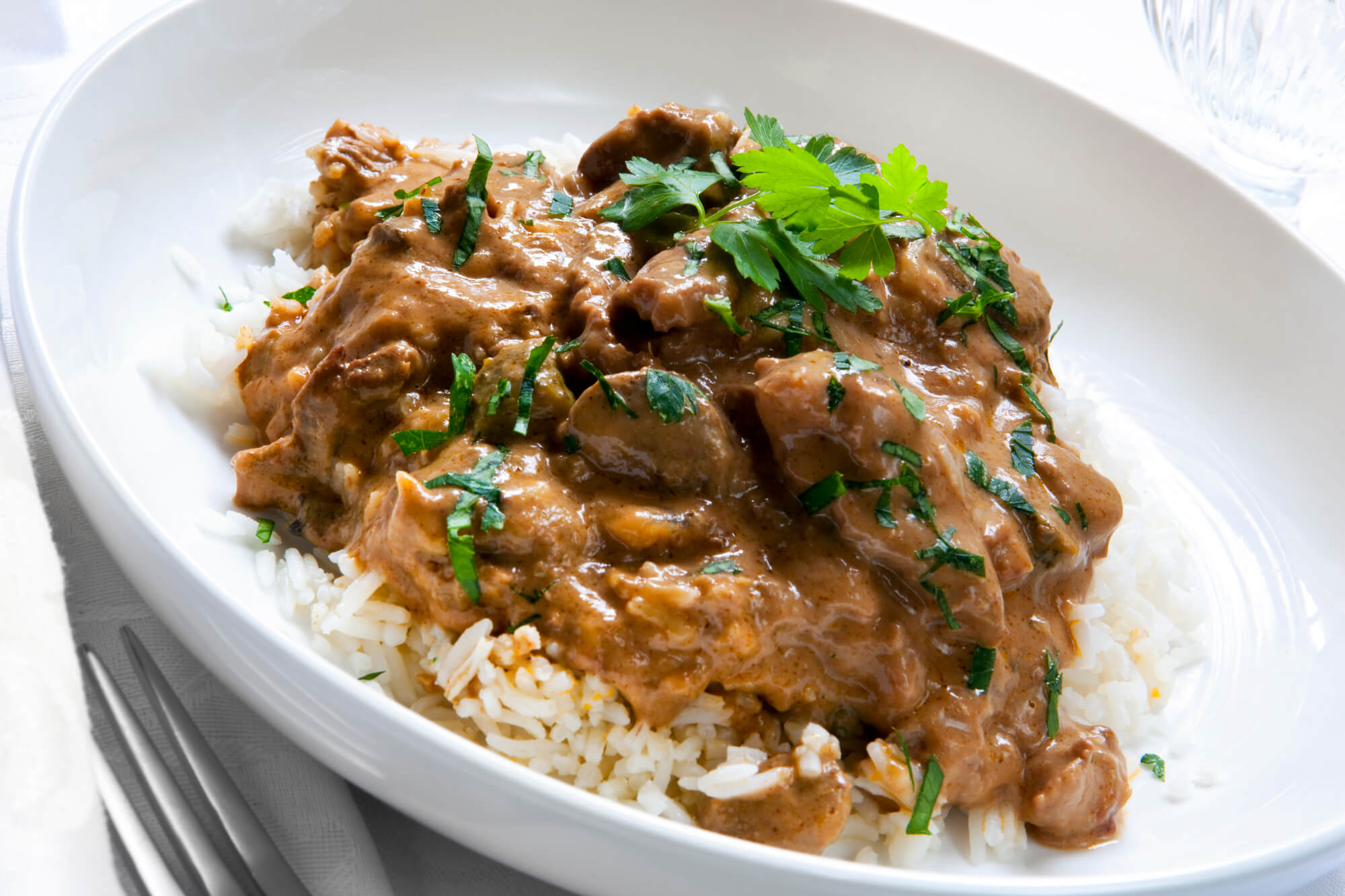
Beef stroganoff over white rice, garnished with parsley.
Beef stroganoff has a storied history intertwined with Russian culture and identity. Though the origins are debated, this savory beef and sour cream sauce dish encapsulates essential aspects of Russian cuisine. Over the centuries, beef stroganoff has solidified its status globally as an iconic Russian food.
Some accounts trace beef stroganoff’s roots to a mid-19th century recipe from the chef of Count Pavel Alexandrovich Stroganov, a wealthy noble. The tender beef strips simmered in a tart sauce paired well with the cold Russian climate. The count’s resources allowed for finer meat cuts and ingredients like mustard and wine to elevate the dish. This exemplified the extravagant culture of the aristocracy at the time.
Other origin stories point to bourgeoisie urban culture in 1860s Russia as giving rise to what became beef stroganoff. The relative affluence, French culinary influence, and influx of ingredients in cities like St. Petersburg created the backdrop for the dish to emerge.Beef stroganoff exemplified the cosmopolitan tastes of the upwardly mobile urban class.
Regardless of exact origins, beef stroganoff embodied essential elements of Russian cuisine. The long winters necessitated preserved foods, pickling, and stocks to add flavor. French technique combined with local crops like mushrooms and onions. The hearty, warm comfort of seared beef in sour cream sauce made it a staple meal during frigid months.
As beef stroganoff spread across Russia in the late 19th century, it transitioned from upper class fare to a ubiquitous national dish. Thrifty cuts of meat along with more affordable ingredients like onions and potatoes made it accessible. The rich, satisfying taste also lent itself well to growing food services and restaurants.
Russia’s Bolshevik Revolution in 1917 further popularized beef stroganoff. The authoritarian government implemented public food programs and standardized recipes, including beef stroganoff. This cemented it as a cultural staple for decades to come. Even after the USSR dissolved, beef stroganoff endured as a nostalgic tie to Russian identity.
Today, whether made with succulent prime rib or humble stew meat, beef stroganoff remains a quintessential Russian dish. The marriage of French refinement and Slavic ingredients helped establish a culinary icon that connects Russians worldwide to their history and culture through food.
Spain – Paella
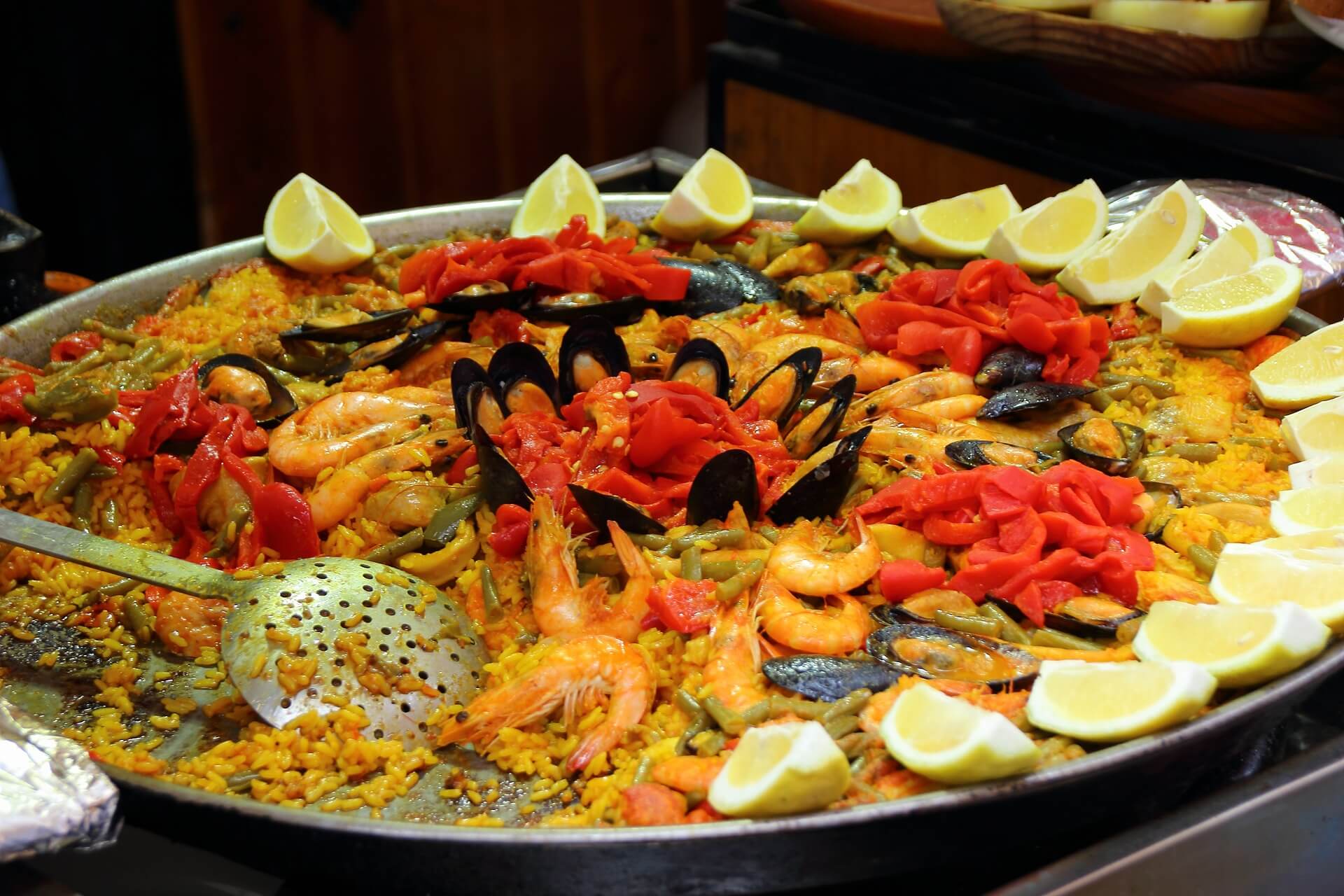
Paella, the iconic rice dish from Spain’s Valencia region, has become a storied part of the nation’s cuisine and cultural identity. More than just a recipe, paella encapsulates core aspects of Spanish food traditions and local pride.
Paella draws its name from the wide, shallow pan used to cook the rice. This traditional paella pan enables the socarrat crust to form on the bottom layer of rice as it slowly absorbs the broth. Achieving the prized crispy crust takes skill and care, showing paella’s roots as a labor of love.
The rice itself connects paella to Spain’s geography and history. Valencia is known for cultivating bomba and calasparra rice varieties that give paella its characteristic texture. Spanish rice was later brought to the Americas as Valencia born conquistador Hernán Cortés colonized Mexico. This demonstrates paella’s deep roots in Spanish culture.
Beyond rice, paella highlights local ingredients like saffron, beans, artichokes, peppers and tomatoes that give the dish its colorful identity. Different regions in Spain have unique paella renditions that showcase local produce and seafood. Paella reflects the country’s regional diversity within one iconic dish.
The communal nature of paella reinforces its cultural importance. In Spain, paella is rarely cooked alone; the pan spans multiple servings. Gathering with family or friends for a paella feast enables conversation and connection. Paella brings people together through shared history and identity.
As Spaniards migrated abroad over generations, paella traveled with them. The dish is now globally known and beloved. Its complex aromas transport those who eat paella back to Spain. For Spaniards and their descendants worldwide, paella remains a flavorful tie to home.
From its traditional cooking methods to its geographic ingredients, paella encapsulates the spirit of Spain. More than a rice plate, it represents community, pride of place, and connection to Spanish identity across borders and generations.
Lebanon – Kibbeh

Delicious fried kibbeh with yogurt sauce in a bowl served on a white plate with lettuce and lemon slices on old wooden table, classic lebanese recipe, horizontal view from above
Kibbeh holds an important place as a national dish in Middle Eastern cuisine, especially for those of Levantine and Iraqi descent. The stuffed bulgur wheat and ground meat patties contain onion, herbs, and spices. Regional variations shape kibbeh into oval balls, torpedoes, or discs. Despite the range of shapes and fillings, kibbeh always brings a taste of home. The labor-intensive dish often appears at family meals and celebrations. For many with Middle Eastern roots, biting into the savory, comforting blend of flavors and textures in kibbeh is a nostalgic experience connecting them to their heritage.
Jamaica – Jerk Chicken
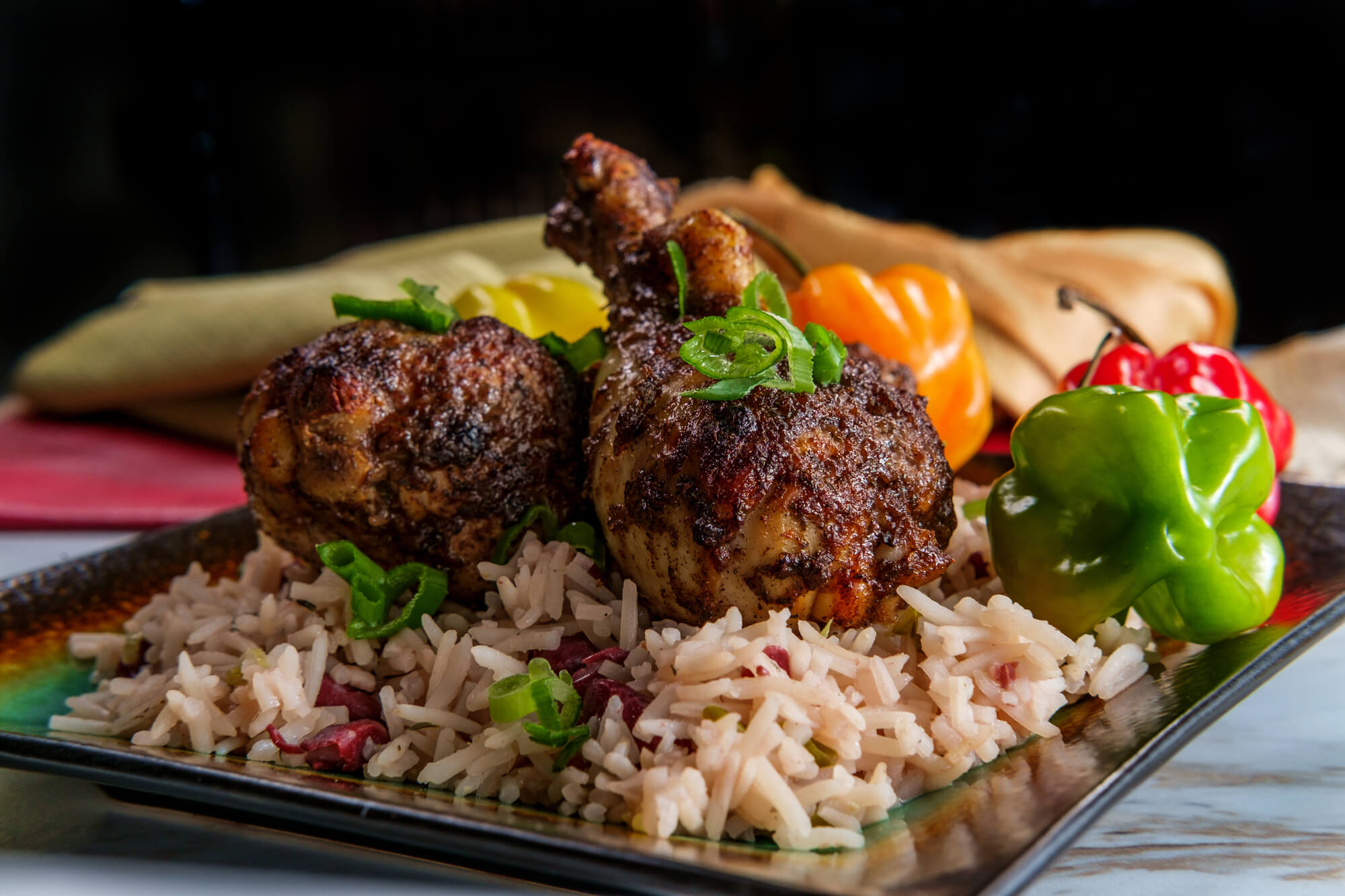
Authentic spicy Jamaican jerk chicken legs with scotch bonnet chili peppers served with coconut rice and peas
Jerk chicken has become Jamaica’s most recognized culinary export and a source of national pride. The unique dry rub combines scorching Scotch bonnet peppers with herbs and spices like allspice, thyme, garlic, and cinnamon. Marinating chicken in this spice blend infuses it with complex heat and aroma before grilling over pimento wood fire. The smoky, spicy chicken encapsulates the essence of Jamaican cuisine’s African and Caribbean influences. More than a dish, jerk chicken represents community in Jamaica’s food culture. The chicken is often cooked in celebration, bringing people together through the shared experience of its mouth-burning and addictive flavors. Whether grilled at roadside stands or five-star resorts, jerk chicken’s fame stems from its embodiment of the vibrant passion, creativity, and spirit of the Jamaican people. For locals and those from the Jamaican diaspora, the national dish ignites a craving for a taste of home.
Hungary – Goulash
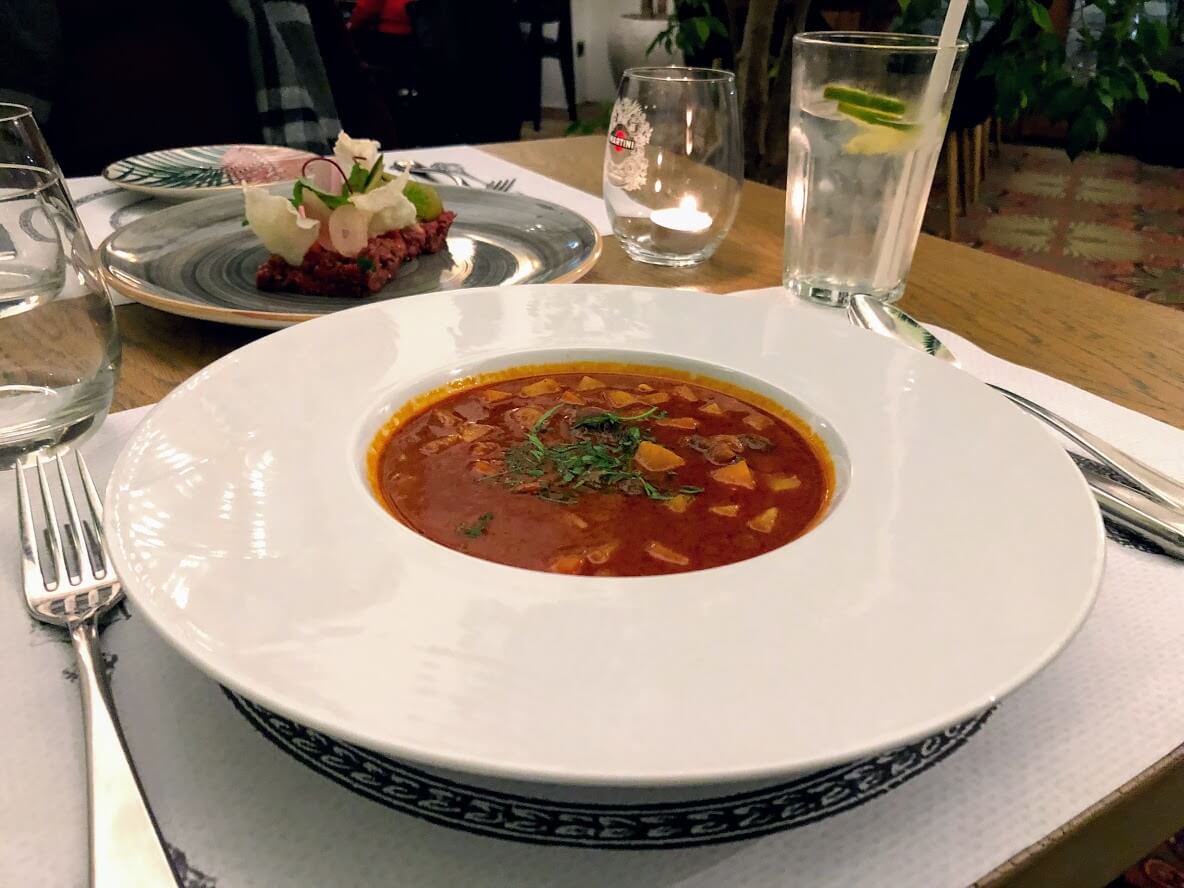
Goulash has become one of Hungary’s most recognized culinary contributions to the world. The hearty meat stew seasoned with paprika exemplifies the country’s climate and culture. Originating as a cattle-driving food cooked over open fires, goulash evolved into a staple. Beef, potatoes, tomatoes, peppers, and of course, ample paprika come together in a comforting, warming blend of flavors. Through the centuries, goulash transitioned from the herder’s pot to the stove and restaurant kitchens as it became ubiquitous in Hungary. Beyond sustenance, it represents hospitality and community with its supplying nature. For Hungarians, the rich aroma and homemade taste of goulash, whether enjoyed on a farm or city cafe, brings nostalgia and cultural pride. As a dish that traveled across borders with Hungarian diaspora yet remains quintessentially Magyar, goulash encapsulates the spirit of the nation.
Austria – Wiener Schnitzel
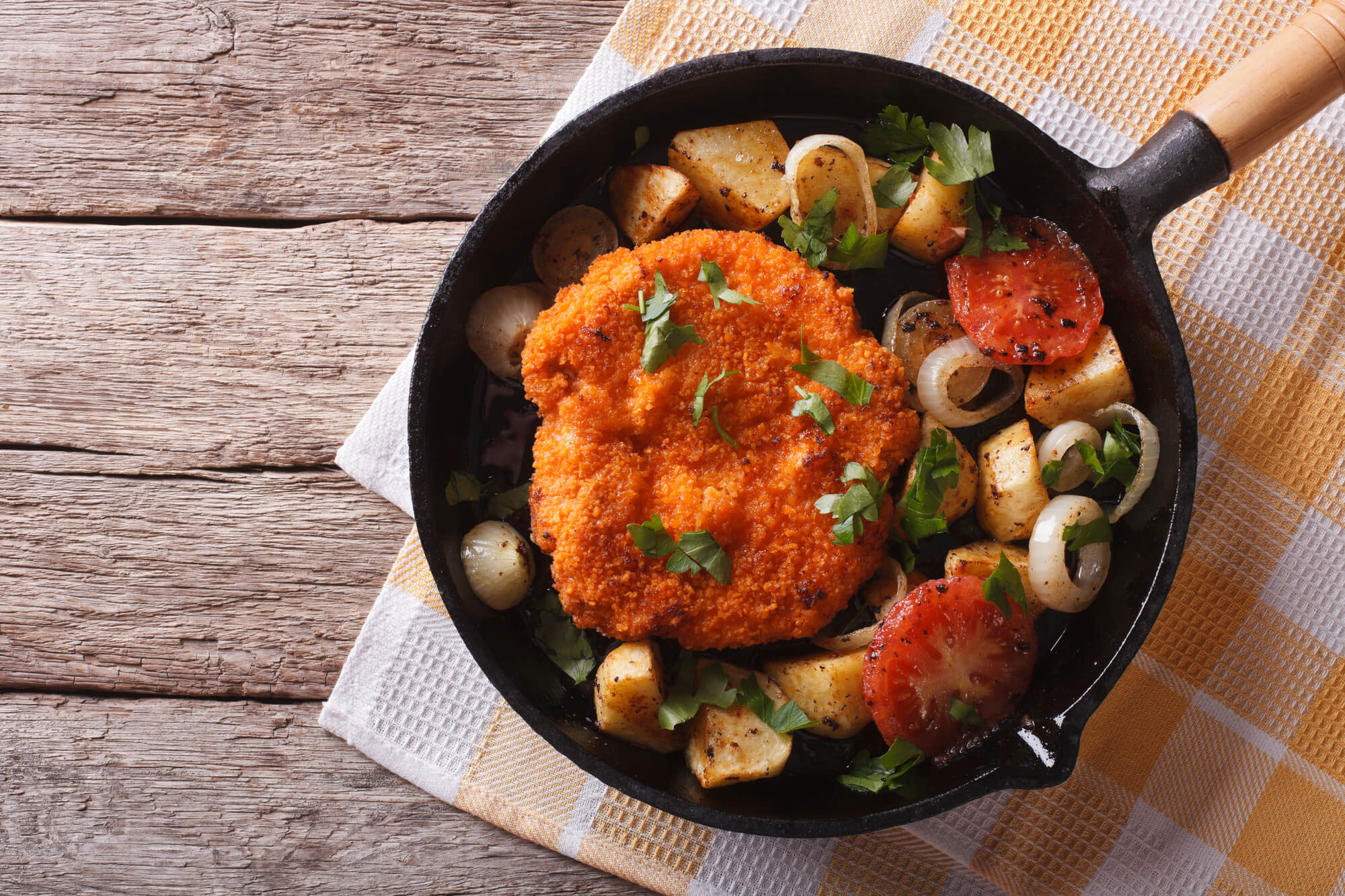
Wiener schnitzel has become an iconic dish in Austrian cuisine. The tender, thin cutlets of veal are breaded and fried until golden brown. While the origins of schnitzel itself trace back to Milan, the distinct Wiener schnitzel evolved in Austrian culture. The delicate veal and light, airy breading complement the local wines. The crunchy yet tender schnitzel also reflects the refined yet satisfying Austrian palate. More than a meal, wiener schnitzel represents a leisurely, social dining experience in restaurants and cafes with friends. For Austrians, the classic flavors bring nostalgia and cultural connection. The timeless preparation has secured wiener schnitzel’s status globally as an ambassador of Austrian food and hospitality.
Switzerland – Fondue
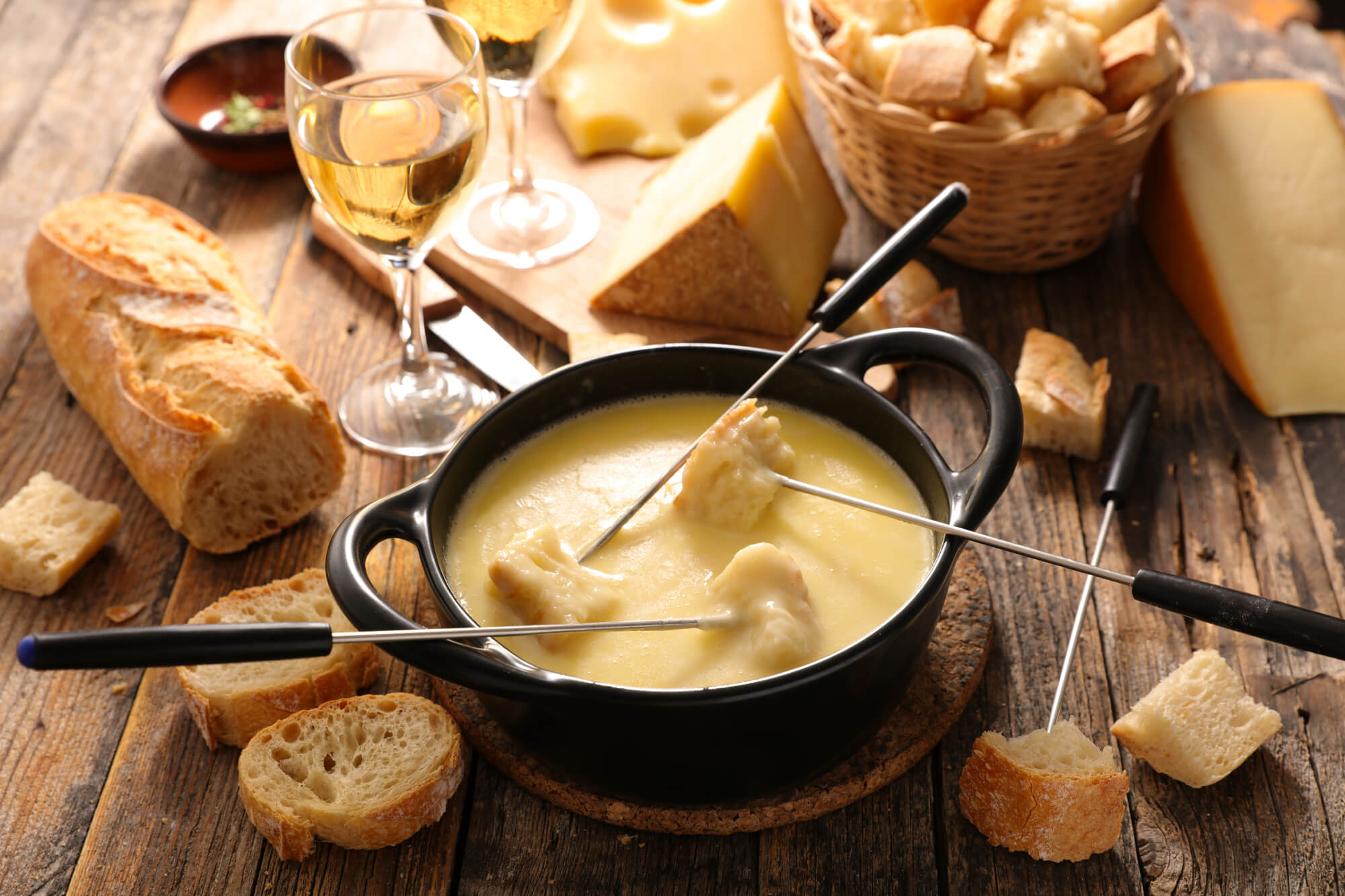
Cheese fondue and bread
Fondue serves as an iconic national dish representing Switzerland’s cultural identity. Melting cheese in wine and scraping bread cubes through it brings people together in a hands-on, intimate dining experience. More than a meal, fondue embodies community, leisurely indulgence, and hospitality in Swiss culture. The dish emerged regionally using Swiss cheeses like Emmental and Gruyere along with rustic bread. Fondue’s popularity grew as a social meal in restaurants and as a staple for ski chalet dinners. The communal pot bubbling with molten cheese delivers lasting memories and cultural nostalgia for both Swiss natives and tourists.
Portugal – Bacalhau (Salted cod)
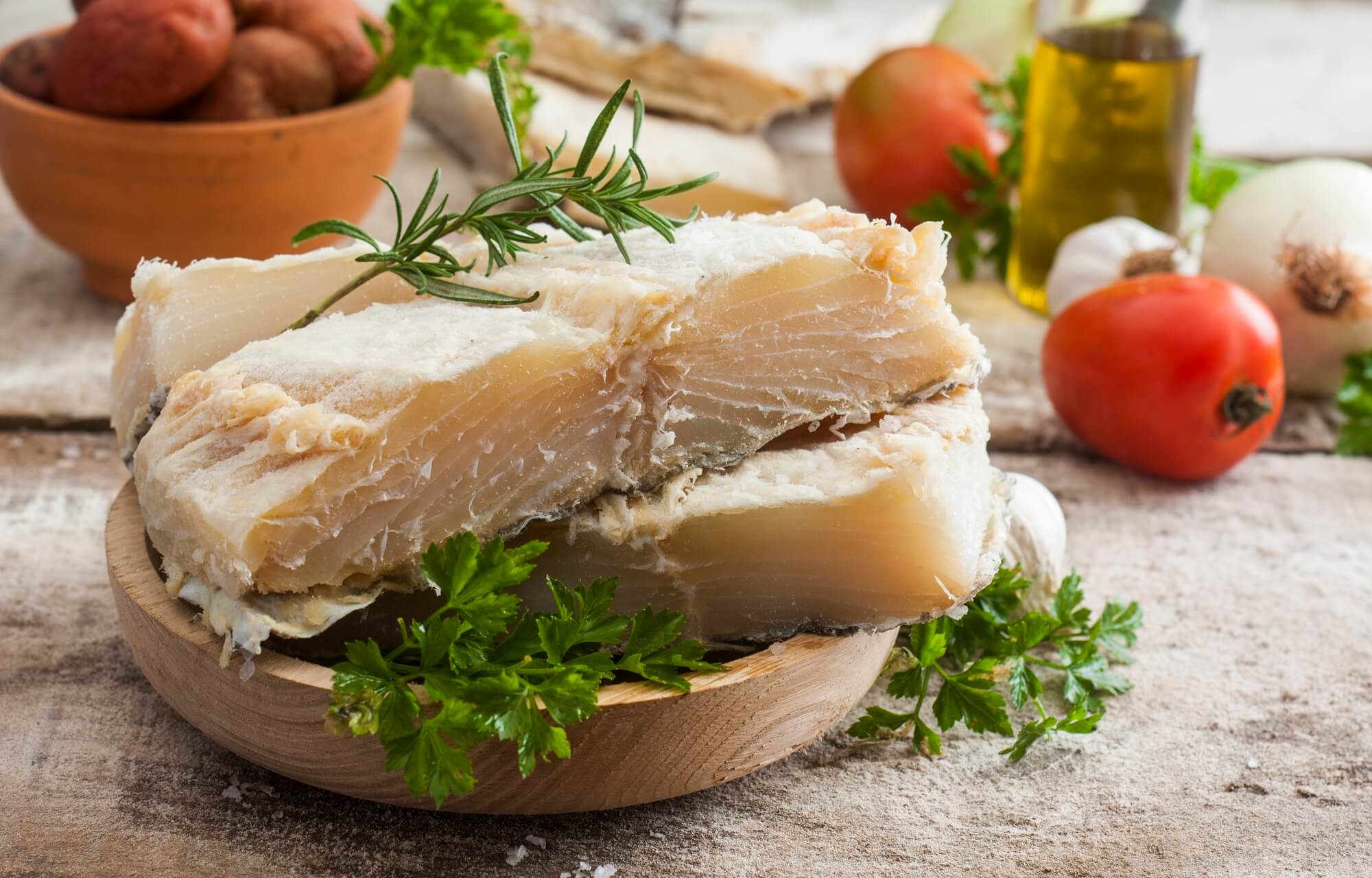
salted codfish on the wooden table with ingredients
Salted, dried cod, known as bacalhau, has become ingrained in Portuguese cuisine and culture as a beloved national dish. The reliance on preserved bacalhau stems from Portugal’s seafaring history and Catholic traditions prohibiting meat during many days. Transforming simple cod into over 100 recipes like bacalhau à brás and pastéis de bacalhau showcases innovation and resourcefulness in Portuguese cooking. Beyond sustenance, bacalhau represents national identity through its connections to Portugal’s history as an empire fueled by fisheries. Dried cod enabled nutrition during long ocean voyages that led to global exploration. Today, the quintessential Portuguese-ness of bacalhau remains, as it is consumed daily in households, found on restaurant menus, and served at festive gatherings. For Portuguese locally and abroad, bacalhau’s storied yet humble roots bring comfort and cultural belonging.
Ireland – Irish stew
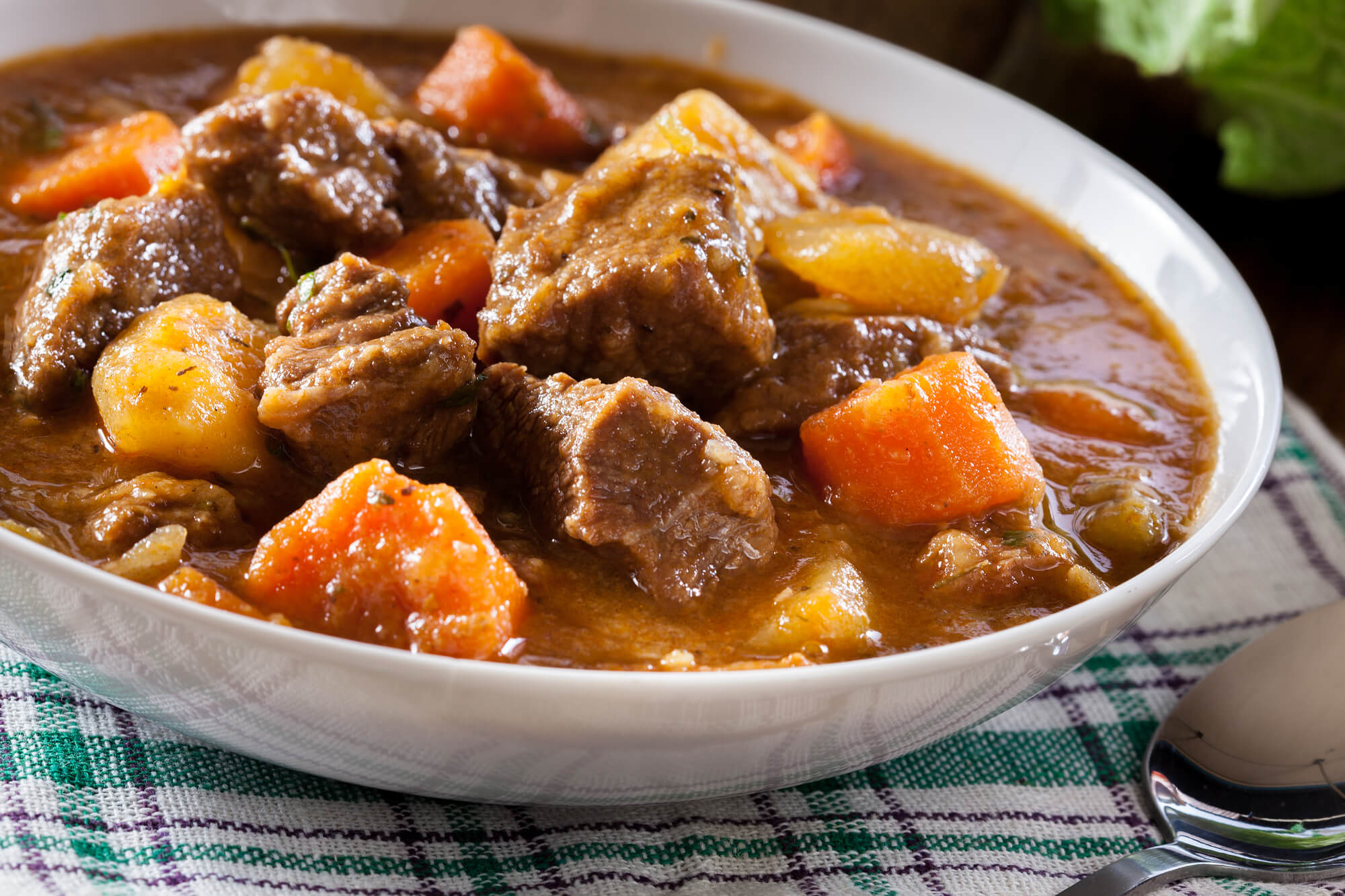
Irish stew made with beef, potatoes, carrots and herbs. Traditional St Patrick’s day dish
Irish stew holds a beloved place in Ireland’s culinary traditions as a humble, hearty comfort food that encapsulates the country’s agricultural roots and cultural identity. This mutton-based stew simmers potatoes, onions, and lamb or mutton in a pot with water and seasonings. The simple but nurturing dish traces its origins to Ireland’s modernizing shift from cattle to sheep farming in the late 1700s.
Using economical mutton and basic vegetables reflected the inventive, resourceful nature of Irish cooking. Potatoes, having arrived from the New World, made a perfect addition with their filling starch. The layers of mutton, potatoes, onions, and seasonings created a homey stew that warmed in winter and stretched meals in leaner times.
Beyond sustenance, Irish stew connected people over shared cultural identity. Extended families bonding around a communal pot of stew during hardships demonstrated Ireland’s enduring community spirit. The aroma and heartiness signifies kinship, resilience, and tradition carried into the modern era.
Irish stew remains a staple in Irish pubs and households today as a nostalgic tie to the past. Variations like adding carrots, celery, or Guinness reflect the evolution of the dish over centuries while retaining its essence. For the Irish and those of Irish descent worldwide, the stew’s soulful simplicity evokes notions of family, homeland, and connection to their roots through humble but culturally rich cuisine. More than a warm meal, Irish stew encapsulates the very soul of Ireland.
Sweden – Meatballs

Swedish meatballs with mashed potatoes, traditional creamy gravy, and lingonberry. Home-made version of a popular classic dish.
The origins of Swedish meatballs can be traced back to the 18th century when King Charles XII returned to Sweden after exile in Turkey. Inspired by the Middle Eastern culinary tradition of spiced ground meat dishes, the king introduced the concept of meatballs to Sweden. Over time, Swedish cooks adapted and refined the recipe, adding their own unique blend of spices and flavors.
Swedish meatballs are typically made from a mixture of ground beef and pork, seasoned with a blend of spices like allspice and white pepper, and bound together with breadcrumbs and eggs. The meatballs are then fried until they develop a crispy, golden-brown exterior while remaining juicy and flavorful on the inside. They are often served with lingonberry sauce, creamy gravy, and a side of mashed potatoes or buttered noodles.
What makes Swedish meatballs particularly special is their role in Swedish culture. They are a staple of the Swedish smorgasbord, a traditional buffet-style meal that showcases a variety of dishes. Swedish meatballs are also an essential component of the beloved holiday tradition of “julbord,” or Christmas buffet, where families gather to celebrate with an array of festive foods.
Furthermore, Swedish meatballs have achieved international fame, thanks in part to the worldwide presence of the Swedish furniture giant, IKEA. The company’s decision to include Swedish meatballs on its menu exposed countless people around the globe to this delectable dish, making it a global symbol of Sweden’s culinary heritage.
In 2018, Swedish meatballs were officially recognized as part of Sweden’s cultural heritage when they were added to the Swedish National Culinary Heritage list. This recognition underscores their significance in Swedish society and their enduring popularity.
Swedish meatballs are much more than just a meal; they are a national treasure that embodies the essence of Swedish cuisine and culture. With their delicious taste, historical roots, and global recognition, Swedish meatballs proudly represent Sweden on the world’s culinary stage, making them a beloved and iconic national dish.
Scotland – Haggis

View of a cooked scottish haggis that has been sliced open.
Haggis, the national dish of Scotland, is as unique as it is flavorful, and it holds a special place in the hearts of the Scottish people. This celebrated dish is a testament to Scotland’s rich culinary heritage and cultural identity.
Haggis is made from a combination of minced sheep’s heart, liver, and lungs, mixed with oatmeal, suet (a type of fat), and a blend of spices and seasonings, including onions and spices like salt and pepper. Traditionally, it’s encased in a sheep’s stomach lining, though modern versions often use synthetic casings. The mixture is then simmered or steamed until it’s hearty and piping hot.
What sets haggis apart is not only its distinctive ingredients but also the rituals and traditions that surround its consumption. Burns Night, an annual celebration on January 25th, commemorates the famous Scottish poet Robert Burns. During this event, haggis is often served as the centerpiece of a ceremonial feast, accompanied by recitations of Burns’ poetry and a toast with Scotch whisky. This tradition has been upheld for centuries, making haggis an integral part of Scottish culture.
Haggis has evolved over time to accommodate modern tastes and dietary preferences. Vegetarian and vegan versions have become increasingly popular, substituting traditional meat ingredients with plant-based alternatives while maintaining the essence of the dish. This adaptation reflects the adaptability and inclusivity of Scottish cuisine.
Internationally, haggis has gained both notoriety and intrigue. However, due to its original use of sheep’s lung, haggis was banned in the United States for many years. In 2010, the ban was lifted, allowing Americans to experience this unique Scottish delicacy.
While haggis might not be an everyday meal for most Scots, it represents a sense of pride and connection to their heritage. It embodies the idea that traditional dishes can continue to evolve and adapt to modern tastes while preserving the cultural significance that makes them truly special. Haggis, with its rich flavors and deep-rooted traditions, serves as a symbol of Scotland’s culinary history, showcasing the country’s enduring love for its unique national dish.
China – Peking Duck
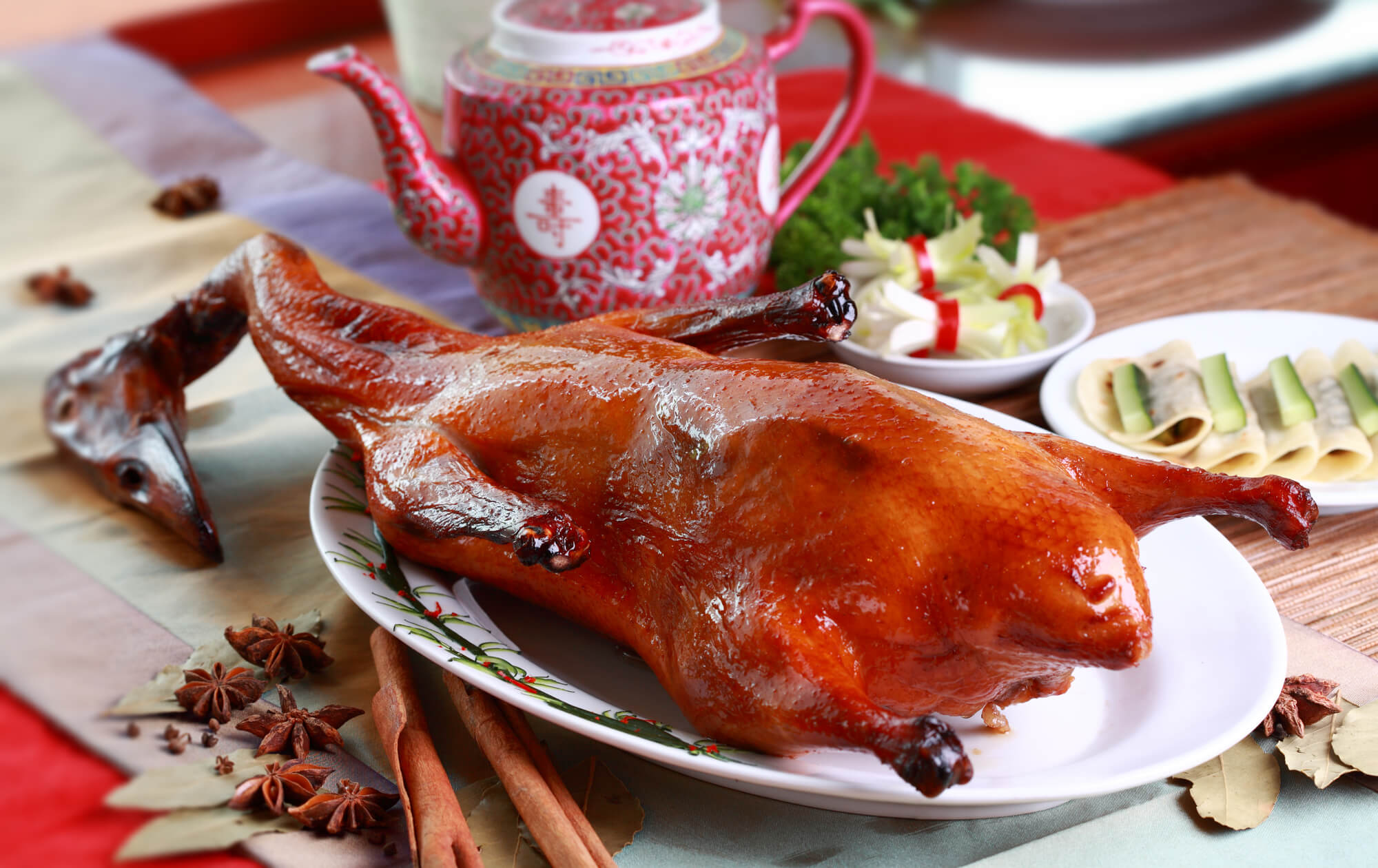
Peking Duck, China’s most famous dish
Peking duck, known as “Beijing roast duck” in China, is not just a national dish; it is an iconic representation of Chinese culinary artistry and tradition. With its history dating back over 600 years, Peking duck has earned its place as one of China’s most celebrated and revered dishes.
The origins of Peking duck can be traced to the imperial kitchens of the Yuan Dynasty (1271-1368). However, it truly flourished during the Ming Dynasty (1368-1644) in Beijing. The dish gained immense popularity among the nobility and aristocracy, eventually becoming a staple at the imperial court.
The hallmark of Peking duck is its perfectly crispy skin and tender, succulent meat. The preparation process is intricate and time-consuming. A whole duck is seasoned with a mix of spices, including ginger, garlic, and star anise, and then air-dried for several hours. It’s roasted in a specialized oven until the skin becomes gorgeously crispy and the meat tender and flavorful.
Traditionally, Peking duck is served with thin, delicate pancakes (known as “mandarin pancakes”) and accompanied by an array of condiments such as hoisin sauce, thinly sliced scallions, and cucumber. Diners assemble their own wraps by spreading hoisin sauce on a pancake, adding a slice of duck, some scallions, and cucumber, and then rolling it into a delectable parcel.
The cultural significance of Peking duck extends beyond its exquisite taste. It is often considered a symbol of wealth and prosperity in Chinese culture, making it a popular choice for special occasions and important gatherings. Its meticulous preparation and presentation showcase the importance of aesthetics and balance in Chinese cuisine.
Peking duck’s reputation has transcended Chinese borders and become a globally recognized culinary treasure. When enjoyed in its place of origin, it offers a sensory experience that blends history, culture, and exceptional flavor. As a national dish, Peking duck embodies China’s rich culinary heritage and its enduring commitment to preserving centuries-old traditions in a rapidly evolving culinary landscape.
Korea – Kimchi
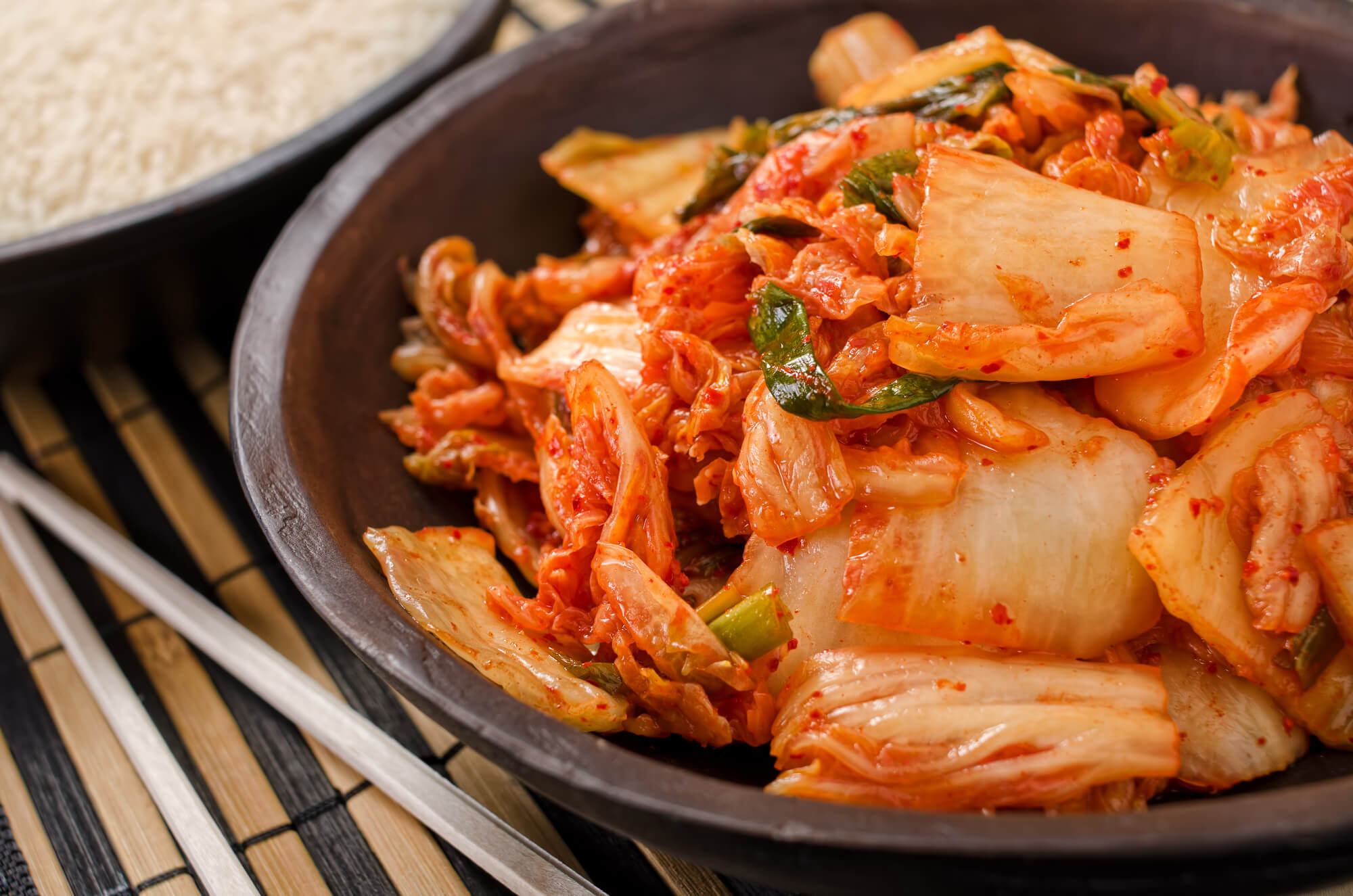
A bowl of traditional Korean kimchi.
Kimchi, the spicy and tangy fermented vegetable dish, is the heart and soul of Korean cuisine, and it holds a revered place as South Korea’s national dish. This iconic foodstuff is not just a source of nourishment but also a reflection of Korea’s rich culinary heritage and cultural identity.
At its core, kimchi is made by fermenting vegetables, most commonly Napa cabbage and Korean radishes, with a blend of ingredients including Korean red pepper flakes, garlic, ginger, fish sauce, and salt. This mixture is carefully prepared, seasoned, and then left to ferment for varying periods, creating a multitude of flavors and textures. The result is a complex, pungent, and spicy side dish that is a staple in Korean cuisine.
Kimchi’s significance transcends its role as a condiment. It’s deeply ingrained in Korean culture, with historical roots dating back over a thousand years. Kimchi-making was traditionally a communal activity in Korean households, often involving extended family members and neighbors coming together to prepare and preserve this vital food source for the harsh Korean winters.
The importance of kimchi extends to modern South Korea, where it’s celebrated with its own holiday, “Kimjang,” during which families and communities gather to make kimchi for the year ahead. Kimchi has also played a symbolic role in Korean diplomacy and cultural exchange, with South Korea presenting kimchi as a gift to other nations and participating in international kimchi-making events.
Beyond its cultural significance, kimchi is renowned for its health benefits, as it’s rich in probiotics, vitamins, and antioxidants. This has earned it recognition as a global superfood, contributing to its popularity worldwide.
In conclusion, kimchi is more than just a side dish; it’s a cultural treasure that embodies the essence of South Korean cuisine and identity. With its centuries-old tradition, rich flavors, and modern-day global appeal, kimchi serves as a symbol of Korea’s vibrant culinary heritage and its enduring influence on the world of food.
Malaysia – Nasi Lemak
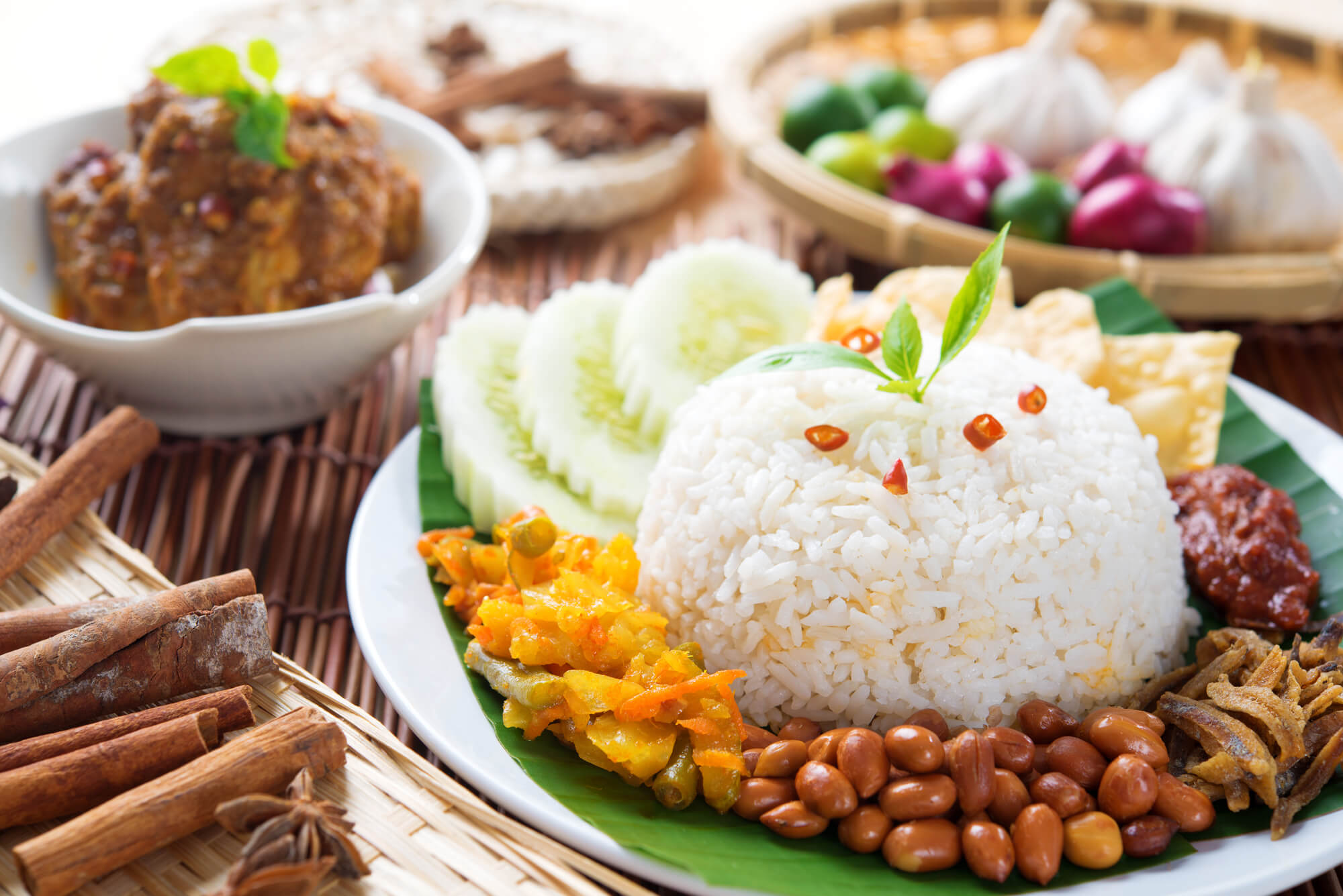
Nasi lemak, popular Malaysian food dish served with chicken rendang.
Nasi lemak, often hailed as Malaysia’s national dish, is a culinary masterpiece that encapsulates the rich and diverse flavors of Malaysian cuisine. This iconic dish is a harmonious blend of fragrant coconut rice, fiery sambal (chili paste), crispy anchovies, toasted peanuts, hard-boiled or fried egg, and a garnish of cucumber slices.
Nasi lemak’s allure lies not only in its delicious taste but also in its cultural significance. It is deeply rooted in Malaysian heritage and is a favorite breakfast or anytime meal for locals. The dish’s name, “nasi lemak,” translates to “rich rice,” a reference to the creamy, coconut-infused rice that forms its base.
Sambal, the fiery chili paste that accompanies nasi lemak, adds a bold kick to the dish and showcases Malaysia’s love for spicy flavors. The combination of textures and flavors in nasi lemak, from the creamy rice to the crunchy peanuts and the zesty sambal, creates a delightful sensory experience.
Nasi lemak is more than just a meal; it represents the cultural diversity and culinary excellence of Malaysia, uniting people of different backgrounds over a shared love for this delicious national treasure. It’s a testament to Malaysia’s vibrant food culture and its ability to bring people together through the pleasure of a good meal.
Israel – Hummus
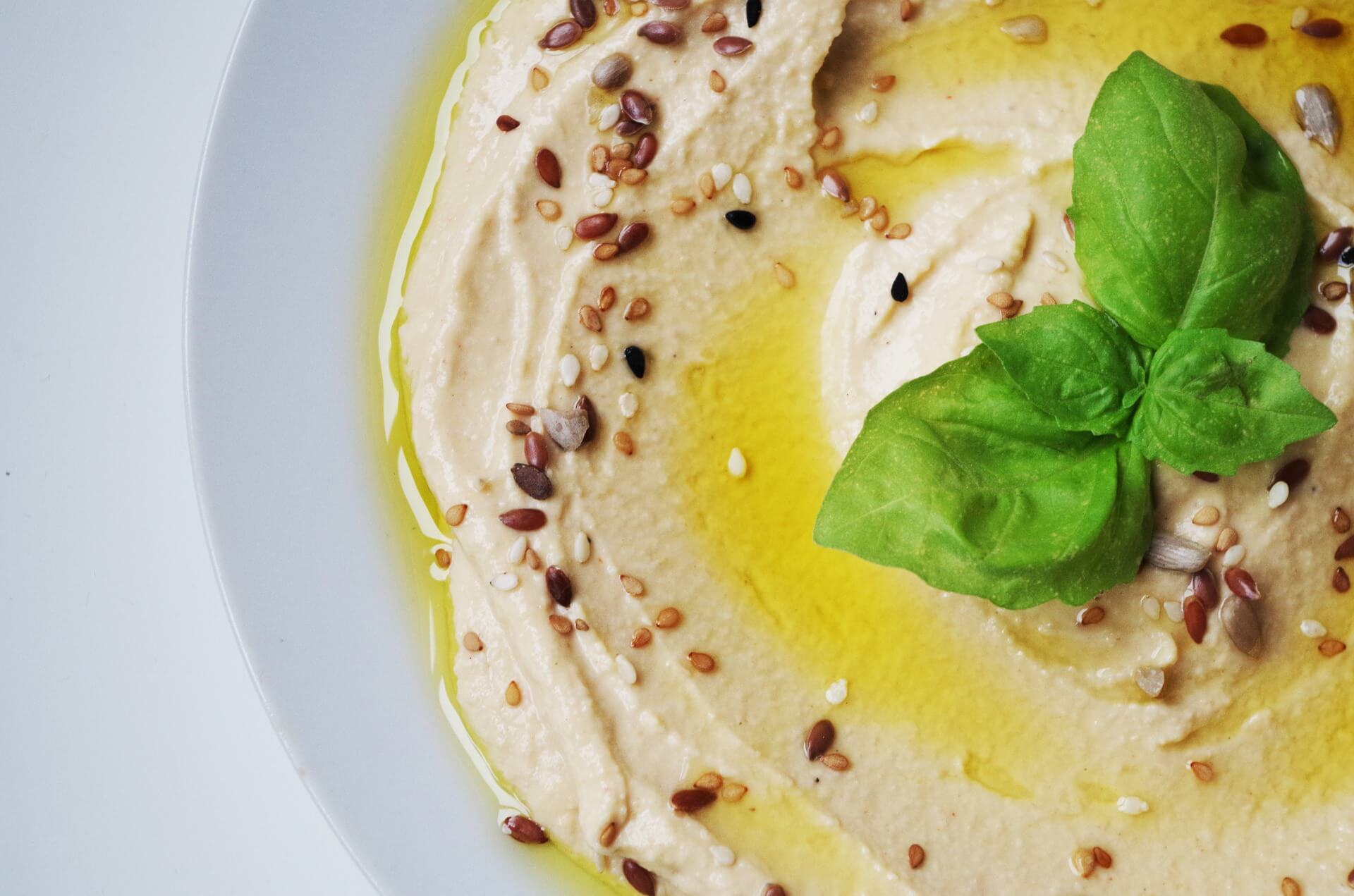
Hummus, often considered a national dish of Lebanon and widely embraced throughout the Middle East, is a culinary masterpiece that transcends borders and brings people together. This creamy blend of chickpeas, tahini, olive oil, lemon juice, garlic, and various seasonings boasts a history that spans centuries.
Hummus is more than just food; it’s a symbol of cultural unity and shared heritage in the Middle East. It represents the rich tapestry of flavors and traditions that characterize the region’s cuisine. Whether enjoyed as a dip with warm pita bread, a topping for falafel, or a side dish with grilled meats and vegetables, hummus is a versatile and beloved staple.
Its global popularity has turned hummus into a symbol of interconnectedness and openness, breaking down culinary boundaries and inviting people from all walks of life to savor its irresistible taste. Its simplicity and wholesomeness also make it a healthy and nutritious choice, contributing to its appeal as a staple in many households worldwide.
Finland – Karjalanpaisti (Karelian hot pot)

Karjalanpaisti, a traditional Finnish dish, is a hearty and flavorful stew that reflects the rustic essence of Finnish cuisine. Hailing from the region of Karelia, this dish is a beloved part of Finnish culinary heritage.
Karjalanpaisti is typically made with boneless beef or pork, root vegetables like carrots and potatoes, and often includes onion and barley for added depth of flavor and texture. The ingredients are slow-cooked in a rich broth until the meat becomes tender and the flavors meld together. The result is a comforting, soul-warming meal that is perfect for Finland’s cold winters.
What makes Karjalanpaisti special is not just its delicious taste, but also its connection to Finnish culture and history. It’s a dish that speaks to the resilience and resourcefulness of the Finnish people, who historically had to make do with locally available ingredients and adapt to the challenging climate.
Today, Karjalanpaisti is cherished as a symbol of Finnish traditions and the enduring spirit of the country’s cuisine. Whether enjoyed in the cozy ambiance of a Finnish home or in a restaurant, it offers a taste of Finland’s cultural heritage and a reminder of the simple, hearty pleasures that define Finnish food.
Estonia – Mulgikapsad (Sauerkraut stew)
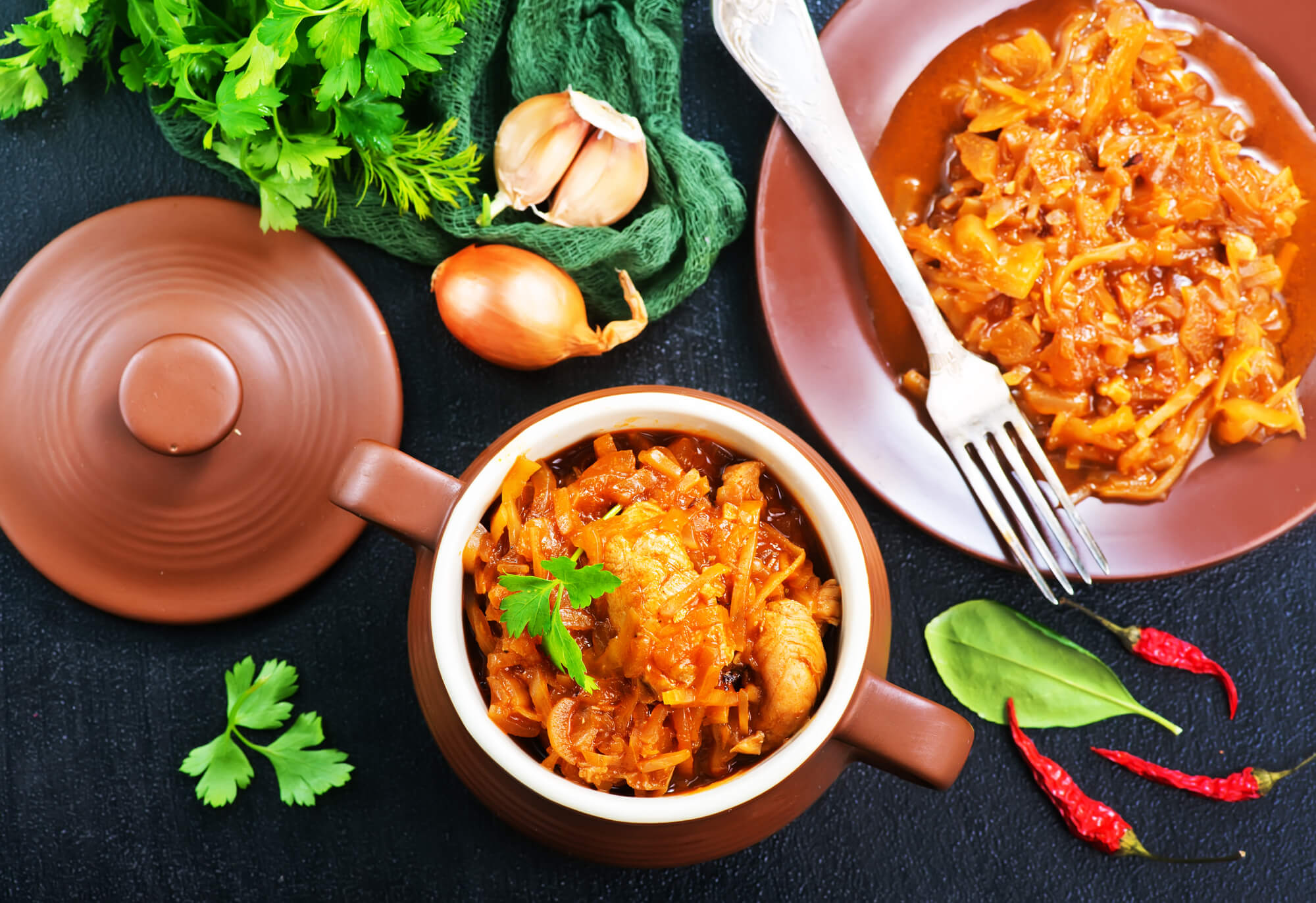
stewed cabbage with tomato sauce and spice
Mulgikapsad, or sour cabbage stew, is a cherished traditional dish in Estonian cuisine. This hearty and flavorful dish has deep roots in Estonian culture and is especially popular during the cold winter months.
Mulgikapsad consists of sauerkraut (fermented cabbage) as the main ingredient, along with pork, barley, and various spices. The sauerkraut’s natural tanginess infuses the stew with a unique, savory flavor that’s both comforting and distinctive. The dish is slow-cooked to perfection, allowing the flavors to meld together, and the pork to become tender.
What makes Mulgikapsad noteworthy is its connection to Estonian history and the rural region of Mulgimaa, from which it derives its name. This dish reflects the resourcefulness of Estonian peasants who preserved cabbage through fermentation to sustain themselves during long, harsh winters.
Today, Mulgikapsad is a symbol of Estonian culinary traditions and is enjoyed throughout the country. It’s often served at family gatherings, holiday feasts, and traditional celebrations, making it an integral part of Estonian culture. This dish exemplifies the resilience and resourcefulness of the Estonian people and continues to be a beloved and enduring culinary tradition.
Ukraine – Borscht
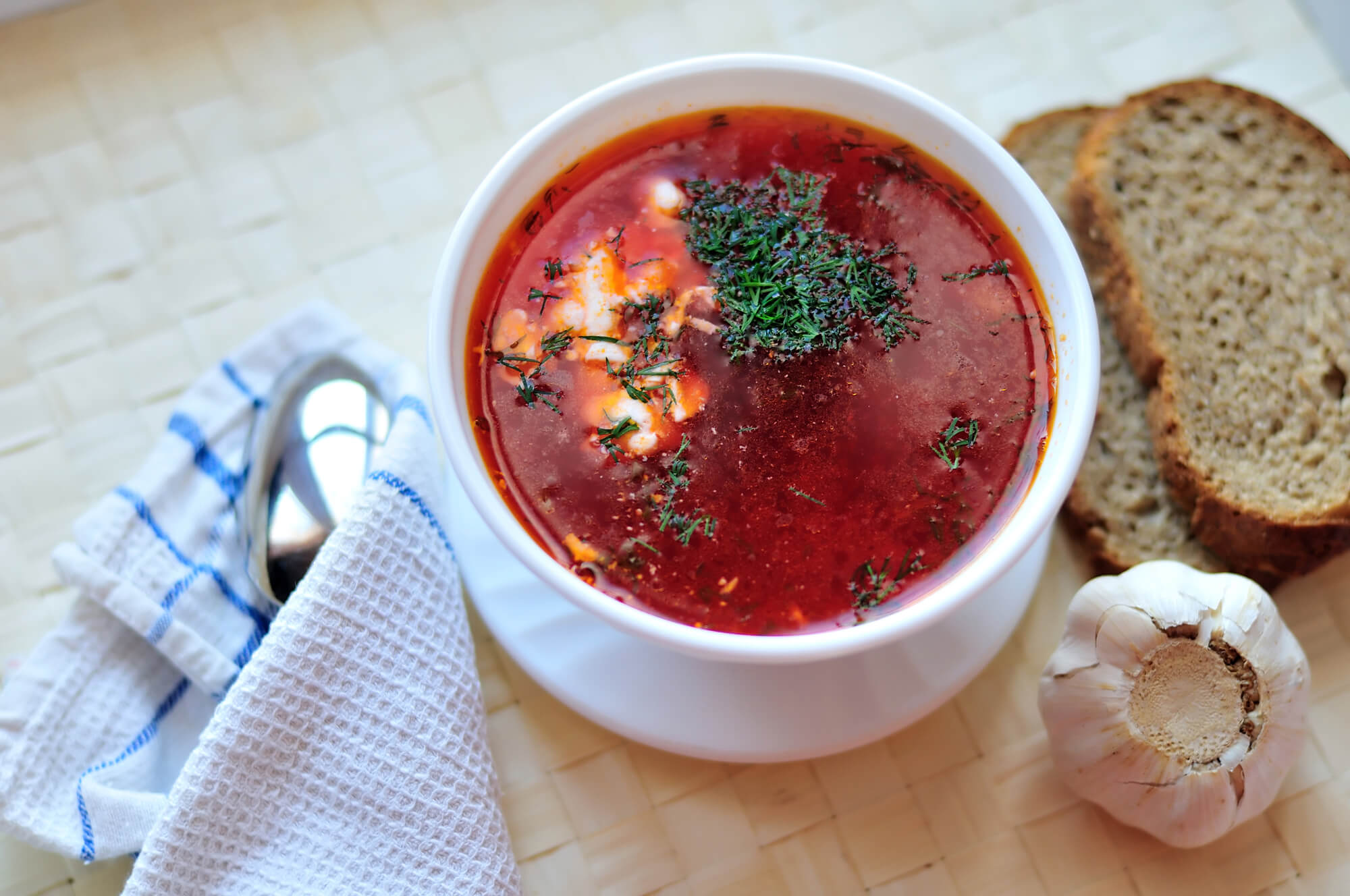
ukrainian and russian red-beet soup (borscht) with garlic and sour cream
Borscht, a vibrant and hearty soup, holds a special place as a national dish in Ukraine and is beloved across Eastern Europe. This iconic beet-based soup is not just a culinary delight; it’s a symbol of Ukrainian cultural identity.
Borscht typically features a base of beets, which give the soup its signature rich red color, combined with a variety of ingredients such as potatoes, cabbage, carrots, onions, and sometimes meat (usually beef or pork). The soup is seasoned with garlic, dill, and often served with a dollop of sour cream, enhancing its complex and delightful flavors.
What makes borscht significant is its historical and cultural ties to Ukraine. It has been a staple in Ukrainian cuisine for centuries, nourishing generations of Ukrainians through harsh winters. It’s a dish that embodies the resilience and resourcefulness of the Ukrainian people.
Beyond Ukraine, borscht has gained international recognition and popularity, transcending borders and becoming a beloved soup worldwide. Its rich, earthy flavors, and vibrant appearance make it a true comfort food. However, its heart remains in Ukraine, where it continues to be a cherished symbol of cultural heritage and a source of pride for the Ukrainian people.
Czechia – Svíčková (Sirloin in cream sauce)
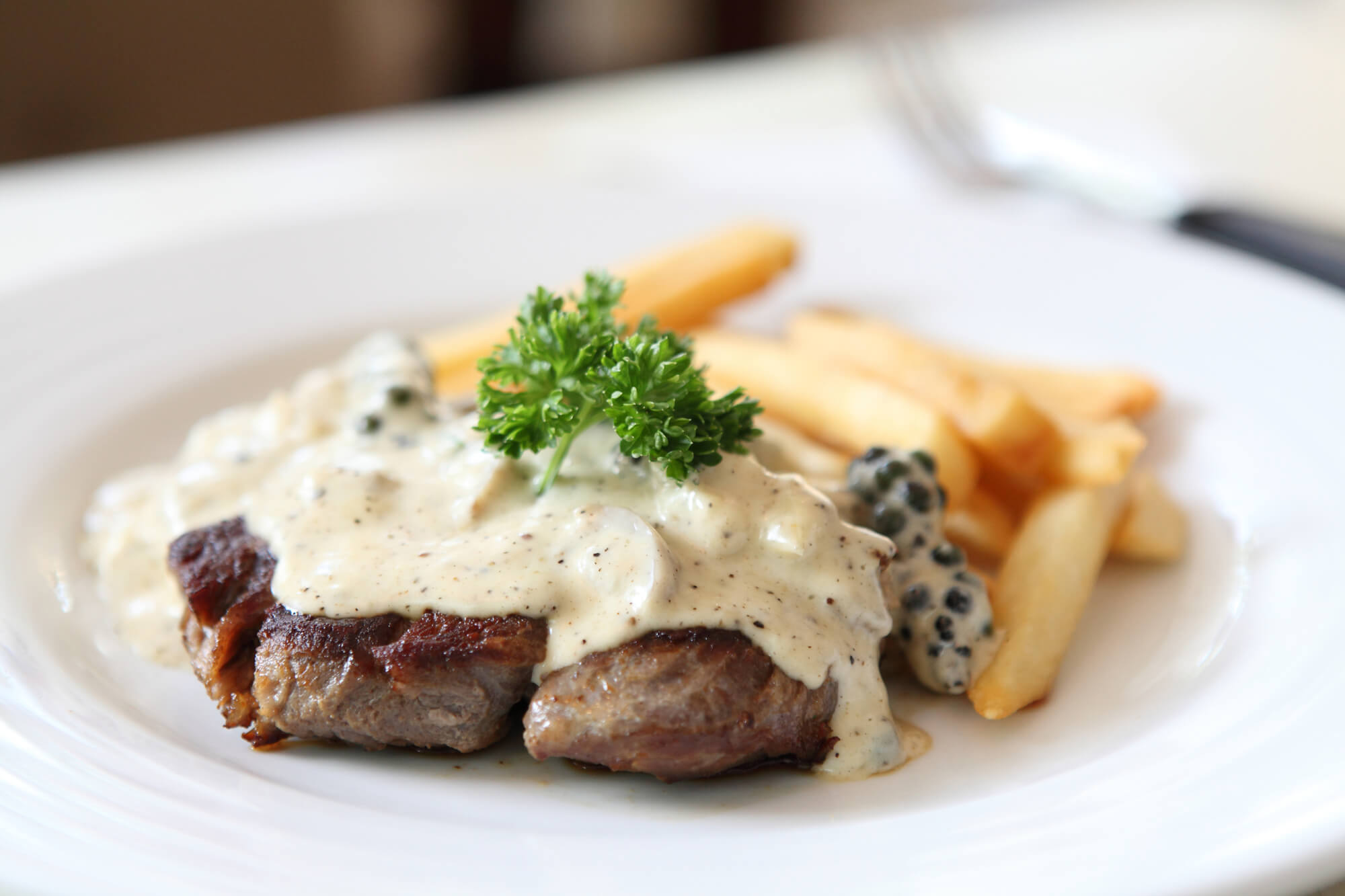
Beef steak with white sauce
Svíčková, often referred to as Svíčková na smetaně, is a cherished Czech national dish that epitomizes the heartiness and flavors of Czech cuisine. This classic dish features marinated beef sirloin, slow-cooked to tenderness, and served with a creamy vegetable sauce made from root vegetables, onions, and a touch of cream.
It’s traditionally accompanied by knedlíky, Czech dumplings, and garnished with a slice of lemon, cranberry sauce, and a dollop of whipped cream. Svíčková’s rich flavors and comforting presentation make it a beloved choice at Czech family gatherings and special occasions, embodying the essence of Czech culinary traditions and hospitality.
Slovakia – Bryndzové halušky (Potato dumplings with sheep’s cheese)

Bryndzové halušky is a beloved Slovak national dish that embodies the hearty and comforting nature of Slovak cuisine. This dish consists of two key components: halušky, which are small potato dumplings similar to gnocchi, and bryndza, a creamy sheep cheese with a tangy flavor.
To make bryndzové halušky, the halušky are prepared by grating potatoes and mixing them with flour and egg to form a dough. This dough is then shaped into small dumplings and boiled until they float to the surface, indicating they are cooked. The cooked dumplings are then mixed with the creamy bryndza cheese, creating a rich and savory sauce. Often, bits of crispy bacon are added for extra flavor, and the dish is garnished with chives or green onions.
Bryndzové halušky is a beloved comfort food in Slovakia, and it’s enjoyed throughout the year. Its creamy and cheesy goodness warms the soul, making it particularly satisfying during the colder months. This dish’s humble yet flavorful ingredients and traditional preparation methods highlight Slovakia’s rich culinary heritage and its people’s love for wholesome, homecooked meals. It’s not just a dish; it’s a taste of Slovak culture and hospitality.
Croatia – Pašticada (Beef stew)
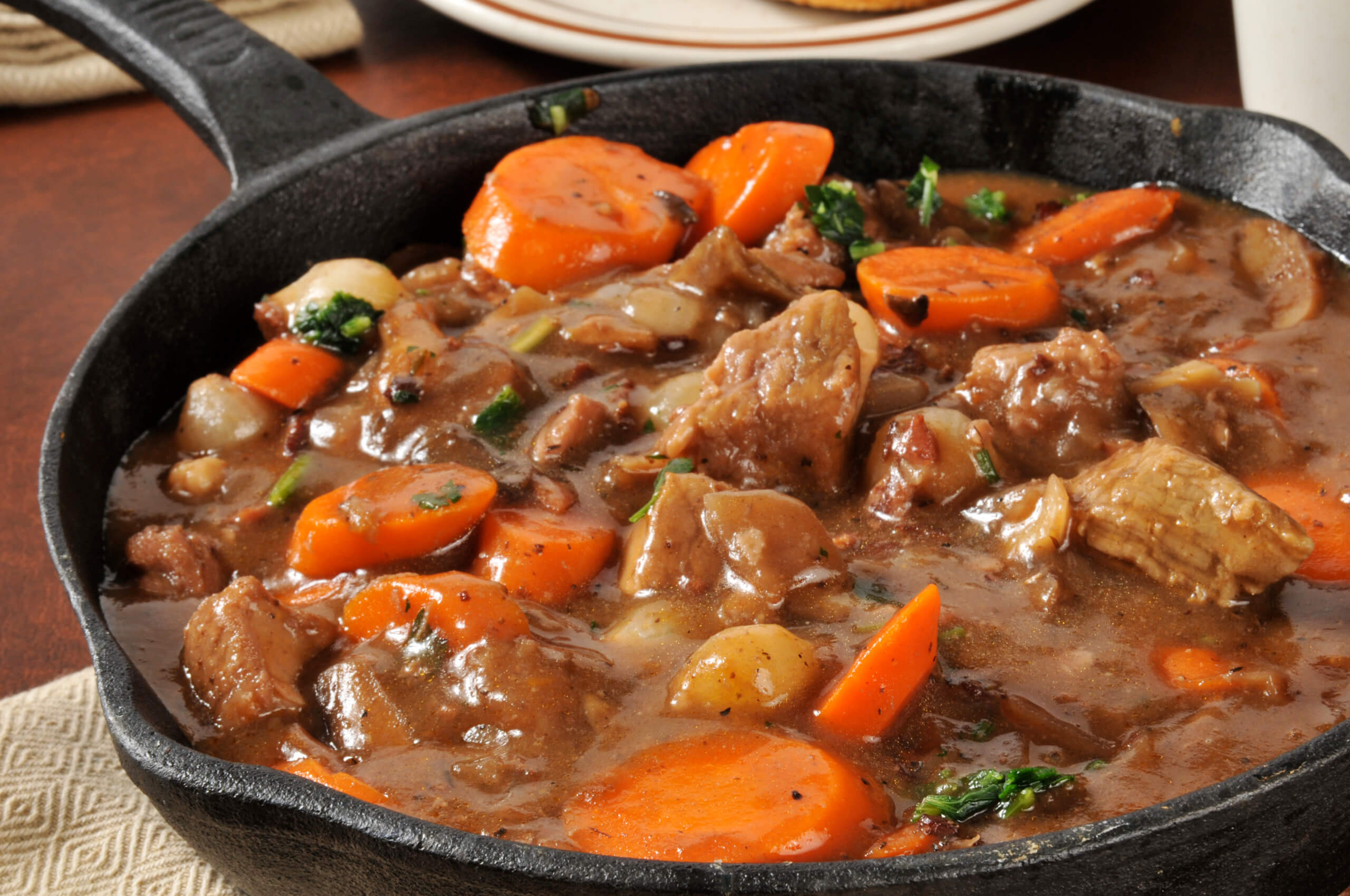
A skillet of beef stew with carrots pearl onions and mushrooms in a burgundy wine sauce
Pasticada is a celebrated Croatian dish that represents the rich and diverse culinary heritage of the country. This traditional Dalmatian specialty is a slow-cooked beef stew, known for its complex flavors and time-honored preparation.
To make pasticada, beef (usually a tough cut like chuck or round) is marinated in a mixture of red wine, vinegar, and a medley of aromatic spices such as garlic, cloves, and bay leaves. The marinated meat is then seared and slow-cooked in its marinade until it becomes tender and infused with the rich, velvety sauce. Often, dried plums are added for a subtle sweetness that balances the savory elements.
What truly sets pasticada apart is the cooking process. It’s traditionally prepared in a special pot known as “peka” or in an oven, slowly simmered over several hours, allowing the flavors to meld and intensify. The result is a succulent and flavorful dish that’s often served with a side of homemade gnocchi or pasta.
Pasticada holds cultural significance in Croatia, particularly in the Dalmatian region. It’s a staple at festive occasions, family gatherings, and special celebrations. This dish showcases Croatia’s commitment to preserving its culinary traditions, offering a taste of history and the warm hospitality of the Croatian people. Pasticada is more than just a meal; it’s a symbol of cultural pride and culinary excellence.
Slovenia – Prezganka (Cottage cheese casserole)

Prezganka is a traditional Slovenian dish that exemplifies the country’s resourcefulness and its ability to turn simple ingredients into a flavorful and satisfying meal. This hearty soup is often associated with the region of Prekmurje in northeastern Slovenia.
Prezganka is a sour soup, typically made with a base of water or broth and thickened with flour that’s roasted until it’s golden brown, giving the soup its distinctive flavor and texture. The roasted flour is then combined with water or broth, creating a smooth, thick consistency. Souring agents like sour cream or fermented milk, such as kefir or buttermilk, are added to give the soup its characteristic tanginess.
To enhance the flavor, onions are often sautéed and added to the soup, along with seasonings like paprika, garlic, and sometimes even vinegar for extra acidity. Some variations of prezganka also include bits of sausage or bacon.
Prezganka is a testament to Slovenian culinary ingenuity, as it transforms humble and readily available ingredients into a comforting and flavorful dish. It’s traditionally served as a main course, especially during colder months, and it reflects the country’s history of farming and self-sufficiency. Prezganka embodies the simplicity and warmth of Slovenian cuisine, making it a beloved and enduring part of the nation’s culinary heritage.
Romania – Sarmale (Stuffed cabbage rolls)

Sarmale, pronounced “sar-mah-leh,” is a beloved and iconic national dish of Romania, and it’s also popular in other countries across the Balkans and Eastern Europe. These stuffed cabbage rolls represent the heart and soul of Romanian cuisine, embodying the country’s rich history and culinary traditions.
To make sarmale, cabbage leaves are carefully blanched and then used as wrappers for a filling typically made of minced pork or beef mixed with rice and a flavorful blend of ingredients such as onions, garlic, and a medley of spices like paprika, thyme, and bay leaves. The rolls are neatly folded, ensuring the filling is securely encased, and then arranged in a large pot.
Sarmale are cooked slowly in a tomato-based sauce, which imparts a rich and tangy flavor to the dish. The rolls are often layered with smoked bacon or sausages, adding a smoky, savory dimension. This slow cooking process allows the flavors to meld, and the cabbage leaves to become tender, creating a harmonious and satisfying meal.
Sarmale hold a significant place in Romanian culture and are traditionally served at festive occasions and important family gatherings, such as weddings and holidays like Christmas and Easter. The process of making sarmale is a communal and time-intensive affair, often bringing together multiple generations of family members in the kitchen.
Beyond Romania, variations of sarmale are found in countries like Serbia, Bulgaria, and Hungary, demonstrating the dish’s regional popularity and cultural importance. Each region adds its unique twist to the recipe, showcasing the versatility and adaptability of this beloved dish.
Poland – Bigos (Hunter’s stew)
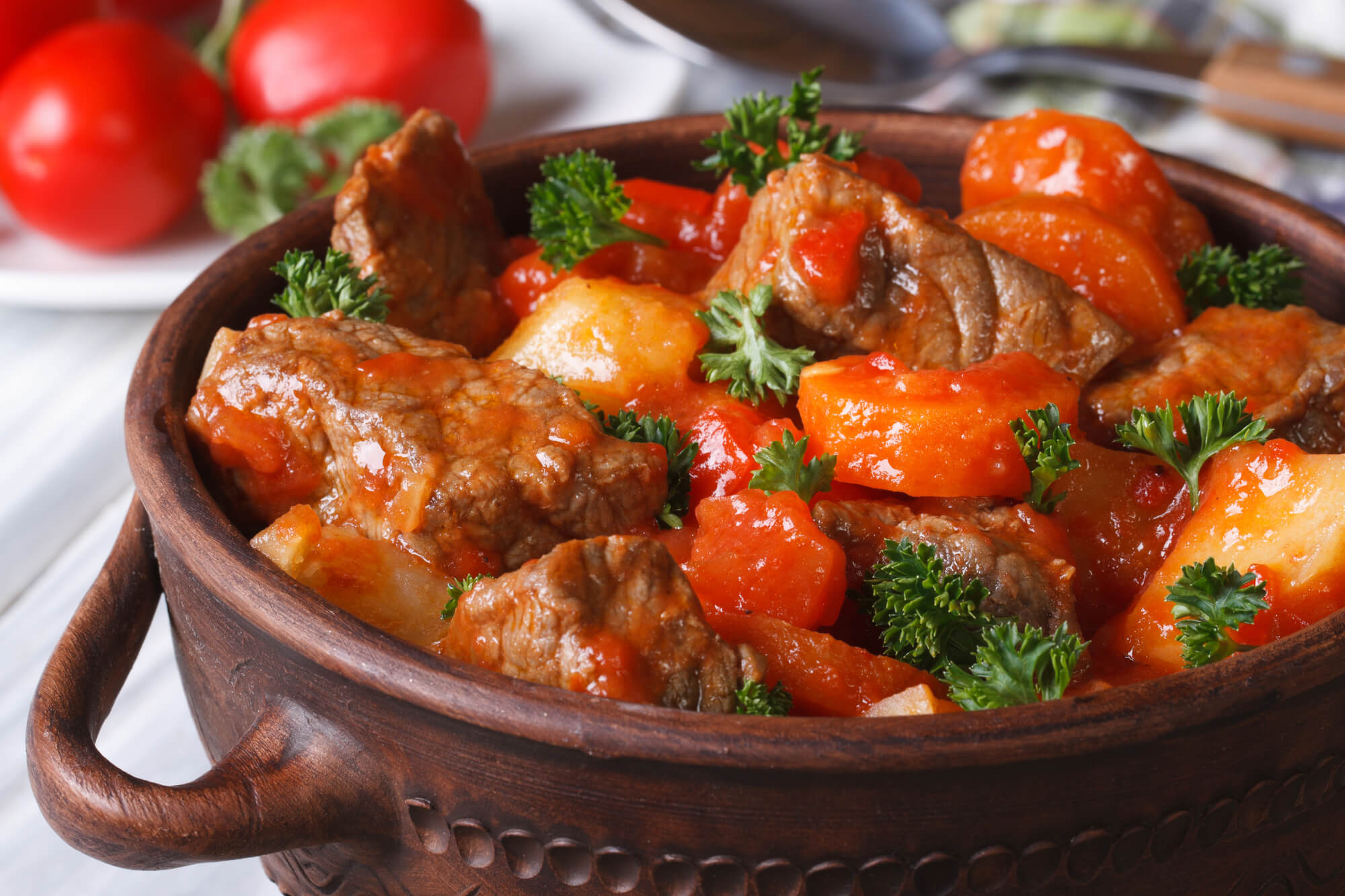
Bigos, often referred to as “hunter’s stew,” is a hearty and iconic Polish dish that exemplifies the country’s culinary heritage and its penchant for rich, flavorful foods. This traditional concoction is often associated with Poland and is deeply ingrained in its culture.
The key ingredient in bigos is sauerkraut, which is fermented cabbage. It’s combined with fresh cabbage and a mixture of meats, typically including pork, beef, and sausage. Additionally, the dish incorporates an array of seasonings such as garlic, bay leaves, allspice, and mushrooms. The ingredients are slow-cooked over an extended period, allowing the flavors to meld together and develop a complex, savory taste.
Bigos is celebrated for its robust and satisfying nature, making it a favorite during cold winter months in Poland. It’s often served at special occasions, family gatherings, and holidays, such as Christmas and New Year’s Eve. In Poland, it’s affectionately referred to as “the hunter’s dish” because it was once a staple for hunters during their long expeditions.
This dish’s versatility has allowed it to evolve over time, with variations adapting to regional tastes and ingredient availability. Bigos not only offers a taste of Poland’s culinary history but also reflects the country’s resourcefulness and ability to create hearty, enduring dishes from simple ingredients. It’s a symbol of Polish hospitality and cultural identity, a flavorful connection to the country’s past, and a beloved comfort food for generations.
Estonia – Verivorst (Black pudding)

Breakfast of traditional black pudding, fried eggs and tomatoes.
Verivorst, often called “blood sausage,” is a traditional Estonian dish with a long history deeply rooted in the country’s culinary heritage. This distinctive sausage, although not exclusive to Estonia, holds a special place in its cuisine.
Verivorst is typically made from a mixture of pork, barley, and blood, often sourced from a pig. The blood gives the sausage its characteristic dark color and a unique, rich flavor. Additional seasonings such as onions, garlic, and various spices are used to enhance the taste.
The preparation of verivorst is a cherished tradition in Estonia, often associated with the celebration of Christmas. Families come together to make this special dish, with each generation passing down their own recipes and techniques. The sausages are stuffed into casings, usually made from intestines, then cooked, either by boiling or frying, until they are cooked through.
When served, verivorst is typically accompanied by a selection of traditional Estonian side dishes like mulgikapsad (sauerkraut with pork) or potatoes. It’s often enjoyed with lingonberry sauce, which adds a tart contrast to the savory flavors of the sausage.
Verivorst is more than just a dish; it’s a symbol of Estonian culinary tradition and the country’s close connection to its rural roots. Its rich, hearty taste and the communal spirit of its preparation make it a beloved and enduring part of Estonia’s culinary heritage.
Denmark – Frikadeller (Meatballs)

Frikadeller, often referred to as Danish meatballs, are a beloved and iconic dish in Denmark, epitomizing the country’s culinary tradition of comfort and simplicity. These delectable meatballs are typically made from a mixture of ground meat, most commonly a combination of pork and veal, though beef or other meats can be used as well.
To prepare Frikadeller, the meat is seasoned with a blend of spices, including salt, pepper, and often nutmeg, and mixed with ingredients like onions and breadcrumbs. Eggs are used as a binding agent to hold the mixture together. The resulting mixture is shaped into small, flattened rounds and fried until they achieve a beautiful golden-brown color.
Frikadeller are often served with a variety of side dishes, such as boiled potatoes, creamy sauces, pickled red cabbage, and lingonberry jam. This dish is a staple in Danish households and is also frequently found on restaurant menus throughout Denmark.
Frikadeller’s appeal lies in its simplicity and heartiness, offering a delicious taste of Danish home cooking. It embodies the essence of Danish cuisine, emphasizing the use of fresh, locally sourced ingredients and traditional recipes passed down through generations.
Canada – Poutine

Classic French Canadian poutine with french fries, gravy, and cheese curds on a rustic tabletop.
Poutine, a delightful and indulgent Canadian creation, has earned its status as a de facto national dish and a symbol of Canadian culinary culture. Originating in the province of Quebec in the late 1950s, poutine has since become a beloved comfort food enjoyed from coast to coast.
At its core, poutine consists of three essential components: crispy French fries, fresh cheese curds, and rich gravy. The fries are typically double-fried to achieve the perfect crispy texture, while the cheese curds are fresh and slightly tangy. The hot, savory gravy is poured over the fries and cheese, melting the curds and creating a delicious, messy amalgamation of flavors and textures.
Poutine’s charm lies in its sheer indulgence. It’s a dish that’s both simple and sublime, with the crispy fries soaking up the warm gravy and softening the cheese curds just enough to create a heavenly combination. The variations on poutine are endless, with some adding toppings like pulled pork, mushrooms, or even lobster to elevate its deliciousness.
Poutine is more than just a tasty treat; it embodies Canada’s diverse culinary landscape and its love for comfort food. It’s a dish that transcends regional differences and brings Canadians together through their shared passion for this iconic dish. Poutine’s popularity has even spread beyond Canadian borders, becoming a global sensation and a true symbol of Canadian cuisine.
Cuba – Ropa vieja (Shredded beef stew)
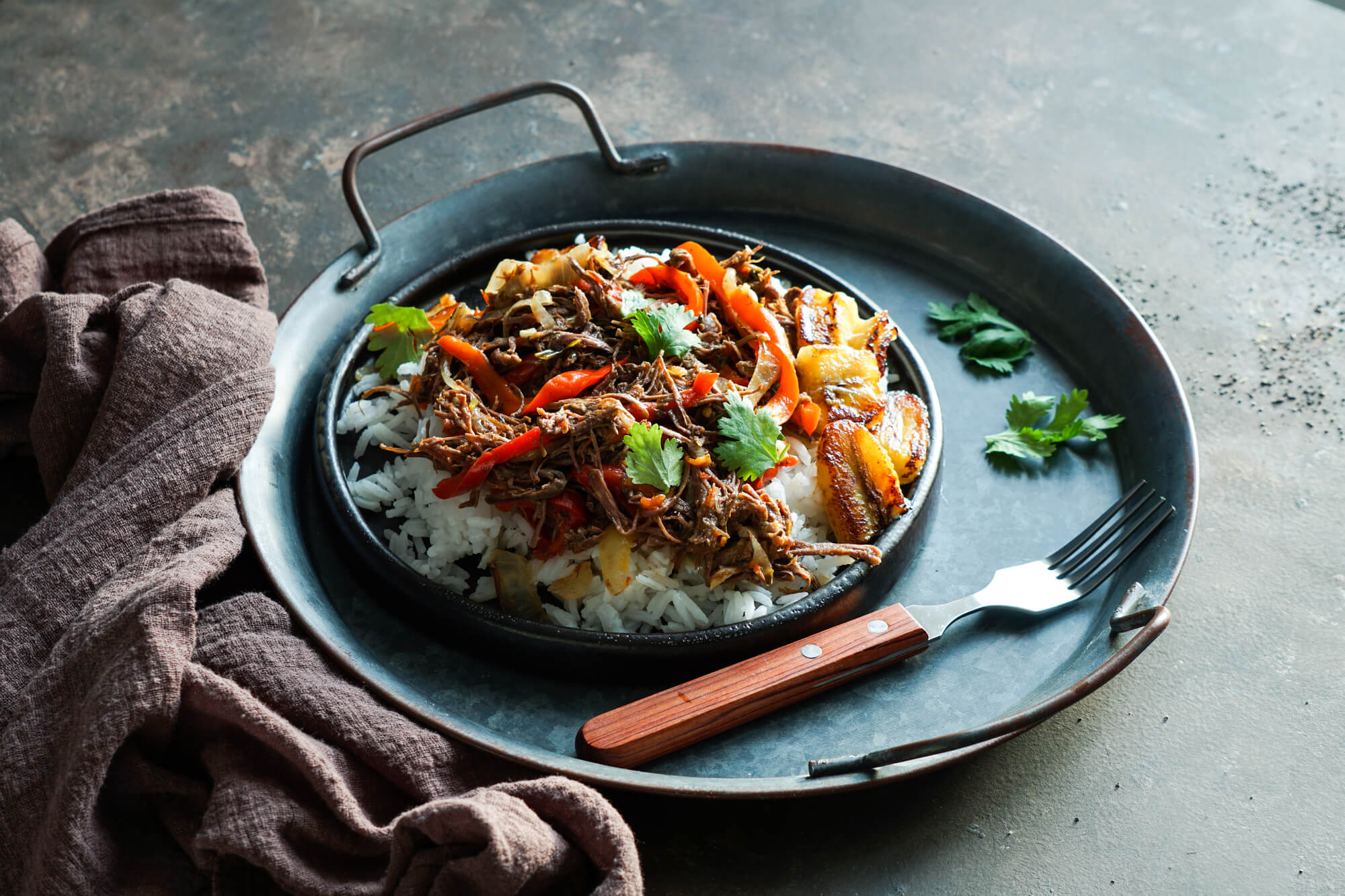
Ropa Vieja, often considered the national dish of Cuba, is a hearty and flavorful stew that tells a culinary story deeply rooted in the country’s history and culture. Its name, which translates to “old clothes,” is inspired by its shredded meat and colorful, ragged appearance.
The star of ropa vieja is tender and succulent shredded beef, typically cooked slowly with a blend of aromatic spices, tomatoes, bell peppers, onions, and garlic. These ingredients infuse the meat with a rich, savory flavor and vibrant hues. The dish is often garnished with peas, olives, and capers, which add a burst of color and complexity to the flavor profile.
Ropa vieja’s roots trace back to Spanish and Canary Island influences in Cuban cuisine, dating back to the colonial period. It’s a testament to the resourcefulness of Cuban cooks who creatively transformed inexpensive and readily available ingredients into a delicious and satisfying dish.
This iconic Cuban stew is not just a culinary delight; it’s a symbol of Cuban cultural identity and resilience. Ropa vieja is a staple on family dinner tables, celebratory gatherings, and special occasions. It embodies the warmth and hospitality of the Cuban people, offering a taste of their vibrant and diverse culinary heritage. Whether enjoyed in Cuba or savored in Cuban communities around the world, ropa vieja is a beloved and enduring representation of Cuban cuisine.
Peru- Ceviche

Ceviche, a refreshing and tangy seafood dish, is celebrated as a national dish in several Latin American countries, including Peru, Ecuador, and Mexico, with each region putting its unique spin on this culinary masterpiece.
In its most basic form, ceviche consists of fresh, raw seafood, often fish or shrimp, marinated in a citrus-based mixture, usually lemon or lime juice. The acid in the citrus juice “cooks” the seafood by denaturing the proteins, giving it a firm texture and a bright, zesty flavor. The marinated seafood is typically mixed with ingredients like onions, tomatoes, cilantro, and peppers, adding layers of flavor and texture.
Ceviche’s appeal lies in its freshness and simplicity. It’s a dish that perfectly captures the essence of Latin American cuisine, emphasizing the use of locally sourced ingredients and the balance of flavors. Each country adds its unique twist, with Peruvian ceviche often featuring aji amarillo (yellow chili pepper) and sweet potato, while Mexican ceviche incorporates avocado and tomato.
Ceviche is more than just a dish; it’s a cultural symbol that reflects the coastal traditions and the love of seafood in these countries. It’s often enjoyed as a light and refreshing appetizer, a beachside snack, or a centerpiece for festive occasions. Whether enjoyed in a coastal town or a bustling city, ceviche offers a tantalizing taste of Latin American culture and a tribute to the bounties of the sea.
Chile – Pastel de choclo (Corn pie)
Pastel de choclo, a beloved Chilean dish, is a hearty and comforting casserole that showcases the country’s rich culinary heritage. Its name translates to “corn pie” in English, and corn is indeed the star ingredient of this flavorful dish.
The main components of pastel de choclo are ground corn, often mixed with sautéed onions, garlic, and spices, forming a thick, slightly sweet corn pudding-like layer. Above this layer, a savory filling is created, typically consisting of seasoned ground beef or chicken, onions, olives, hard-boiled eggs, and raisins. This mixture is layered on top of the corn base, creating a delightful contrast of flavors and textures.
The dish is baked until it forms a golden-brown crust on top, with the corn layer becoming slightly crisp. When served, pastel de choclo is often garnished with a sprinkling of powdered sugar and sometimes accompanied by pebre, a Chilean condiment similar to salsa.
Pastel de choclo is more than just a meal; it’s a cultural symbol and a taste of Chile’s history. It reflects the influence of indigenous Mapuche cuisine and Spanish colonial ingredients, resulting in a unique and flavorful dish that Chileans hold dear. Typically enjoyed during special occasions and family gatherings, this comforting casserole is a reminder of Chilean hospitality and the country’s rich culinary traditions.
Iran – Ghormeh sabzi (Herb stew)
Ghormeh sabzi, often considered the national dish of Iran, is a flavorful and aromatic herb stew that holds a special place in Persian cuisine. Its name translates to “green stew” in English, which aptly describes the dish’s vibrant green color and its emphasis on fresh herbs.
The primary ingredients in ghormeh sabzi are a mixture of herbs, usually parsley, cilantro, fenugreek, and leeks, all finely chopped and sautéed to release their fragrant aromas. This herb mixture is then combined with cooked red kidney beans and tender chunks of meat, typically lamb or beef. The stew is flavored with spices such as dried lime, turmeric, and sometimes cinnamon, creating a complex and balanced taste.
Ghormeh sabzi is known for its rich, earthy flavors and is often enjoyed with fluffy white rice, creating a delightful contrast in textures. It’s a dish that reflects Iran’s cultural heritage and the importance of fresh herbs in Persian cooking. Ghormeh sabzi is not just a meal; it’s a representation of the deep-rooted culinary traditions and warm hospitality of Iran. It’s a beloved favorite for special occasions and gatherings, uniting people over the shared love of this iconic Persian dish.
Pakistan – Biryani
Biryani, a fragrant and flavorful rice dish, may not have official national dish status, but it’s undoubtedly a culinary gem that symbolizes the diverse and rich tapestry of Indian cuisine. It’s cherished across India and has variations that reflect regional tastes and traditions.
Biryani typically consists of long-grain Basmati rice cooked with aromatic spices, saffron or turmeric for color, and a combination of marinated meat, such as chicken, mutton, or fish. The meat and rice are often layered and slow-cooked in a sealed pot, allowing the flavors to meld together and create a harmonious and fragrant dish.
What makes biryani special is its versatility and adaptability to local ingredients and preferences. Variations like Hyderabadi biryani, Lucknawi biryani, and Kolkata biryani showcase the diversity of styles and flavors found throughout India.
Biryani is not merely a meal; it’s a cultural experience that reflects India’s love for aromatic spices, the artistry of layering flavors, and the warmth of communal dining. Whether enjoyed at a family gathering, a festive occasion, or as a daily comfort food, biryani embodies the essence of Indian cuisine, uniting people over a shared passion for this iconic dish.
Iraq – Dolma
Dolma, a cherished dish throughout the Middle East and Mediterranean region, is a culinary masterpiece that showcases the artistry of stuffed vegetables. While it may not have official national dish status in any particular country, it is an enduring symbol of the cultural and gastronomic heritage of numerous nations.
The term “dolma” means “stuffed” in Turkish, and it aptly describes the preparation method. Dolma consists of vegetables such as grape leaves, bell peppers, tomatoes, eggplants, or zucchinis that are carefully hollowed out and filled with a flavorful mixture. The filling typically comprises a blend of rice or bulgur wheat, minced meat (often lamb or beef), aromatic herbs, spices like mint and parsley, and sometimes dried fruits like currants or raisins.
Dolma is often slow-cooked in a tomato-based broth or a lemony sauce until the vegetables are tender and the flavors meld together, creating a harmonious and satisfying dish.
This culinary tradition transcends borders and is cherished in countries like Greece, Turkey, Lebanon, and Armenia, each with its unique twist on dolma. It exemplifies the meticulous craftsmanship and attention to detail in Middle Eastern and Mediterranean cooking, as well as the use of fresh, local ingredients. Dolma is more than just a meal; it’s a cultural treasure that unites nations and reminds us of the beauty of sharing food traditions across diverse regions and communities.
Palestine – Musakhan (Chicken and onions)
Musakhan, a cherished Palestinian dish, is a flavorful representation of the Middle East’s rich culinary heritage. It consists of tender pieces of roasted chicken seasoned with sumac, allspice, and other aromatic spices. These succulent chicken pieces are placed atop a bed of flatbread, often Arabic taboon bread, which soaks up the delicious juices and flavors.
To complete the dish, it’s traditionally garnished with caramelized onions and pine nuts, adding a sweet and nutty contrast to the savory chicken. Musakhan is known for its fragrant and sumptuous aroma, which comes from the generous use of sumac, a tart, lemony spice that is common in Middle Eastern cooking.
Musakhan is not just a meal; it’s a cultural symbol that represents Palestinian heritage, hospitality, and the importance of sharing food with loved ones. It’s often prepared for special occasions and family gatherings, and it’s a source of pride and tradition for Palestinians around the world. The dish encapsulates the warmth and flavor of Palestinian cuisine and is a delightful experience for anyone fortunate enough to savor its exquisite taste.
Cyprus – Souvla (Rotisserie lamb and chicken)
Souvla, a popular Cypriot dish, is a true embodiment of Mediterranean culinary traditions, although it might not have official national dish status. This delectable specialty revolves around skewers of succulent, marinated meat, typically pork, lamb, or chicken, which are grilled to perfection over an open flame or on a rotisserie.
The secret to souvla’s mouthwatering flavor lies in its marinade, usually consisting of a blend of olive oil, lemon juice, garlic, oregano, and a variety of aromatic herbs and spices. The meat is left to soak in this flavorful mixture, infusing it with a fragrant and tangy essence.
Traditionally, souvla is prepared during festive occasions and family gatherings. The skewered meat is grilled slowly, allowing it to develop a crispy, charred exterior while remaining tender and juicy on the inside. It’s often enjoyed with accompaniments like pita bread, fresh vegetables, and tangy dips such as tzatziki.
Souvla is more than just a meal; it’s a cultural tradition and a testament to Cyprus’ love for good food and conviviality. It’s a dish that brings people together, creating a sense of camaraderie and celebration, and it represents the warm and hospitable spirit of Cypriot cuisine.
Morocco – Tagine
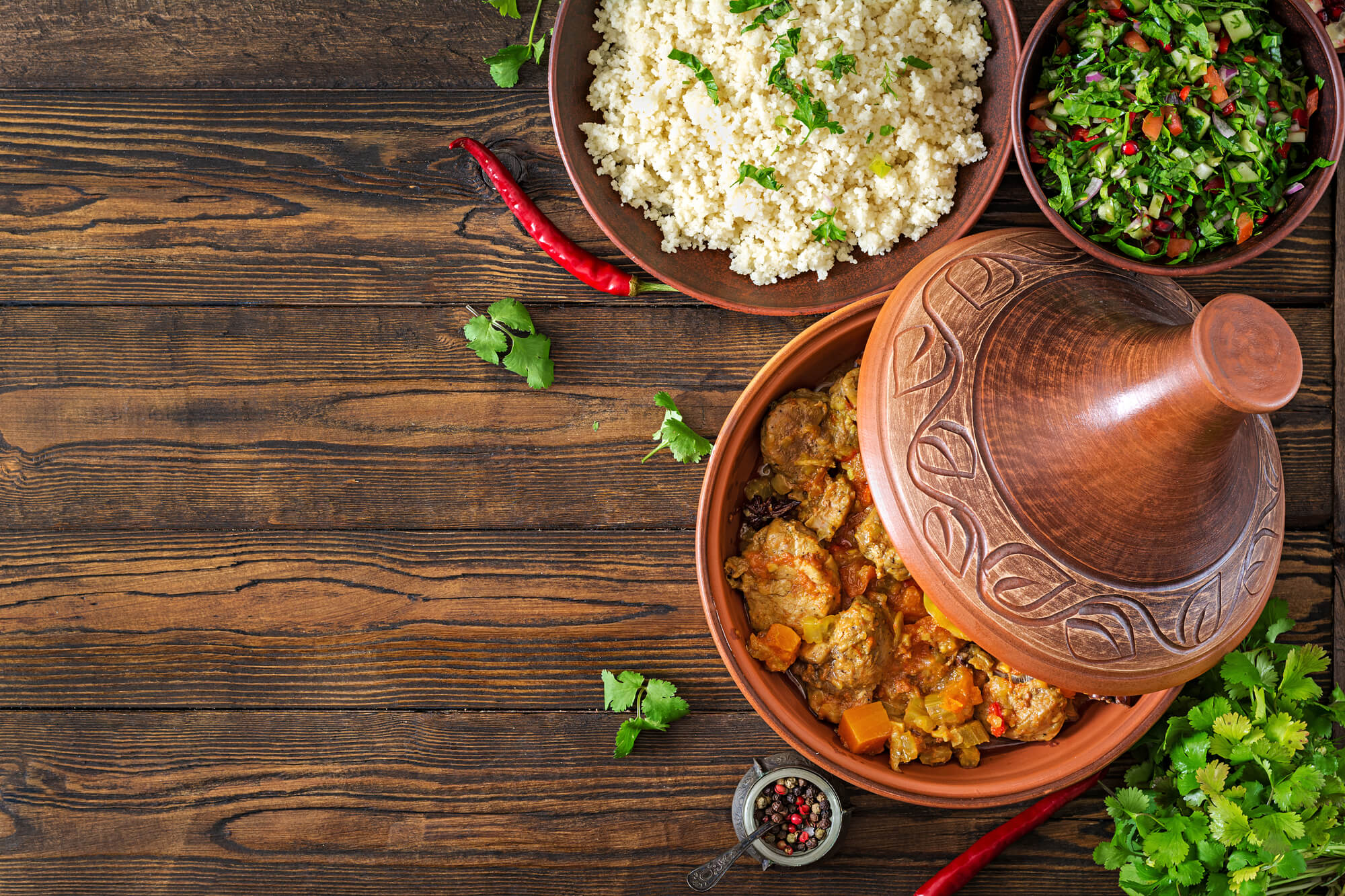
Traditional tajine dishes, couscous and fresh salad on rustic wooden table. Tagine lamb meat and pumpkin. Top view. Flat lay
Tagine, a beloved Moroccan dish, is an iconic representation of North African cuisine, particularly Moroccan. Although it may not hold official national dish status, it’s a culinary masterpiece deeply rooted in Moroccan culture.
At its core, tagine refers to both the dish itself and the special clay pot in which it’s traditionally cooked. The dish is known for its slow, gentle cooking method, resulting in tender and flavorful stews. It typically features a combination of meat, such as lamb, chicken, or beef, along with an array of vegetables, herbs, and aromatic spices like cumin, cinnamon, and saffron.
The unique conical shape of the tagine pot allows steam to circulate, condense, and trickle back into the dish, ensuring that the ingredients remain moist and flavorful. This method creates a harmonious blend of tastes and textures, making tagine a favorite among Moroccan cuisine enthusiasts.
Tagine’s rich flavors and cultural significance make it a staple in Moroccan households, often served during special occasions, family gatherings, and celebrations. It’s a dish that reflects Morocco’s diverse culinary influences, from Arabic to Berber to Mediterranean, and embodies the country’s hospitality and sense of community. Tagine is more than just food; it’s a symbol of Moroccan identity, tradition, and the joys of sharing a hearty, aromatic meal with loved ones.

